Calcium absorption is hindered by. Factors Inhibiting Calcium Absorption: A Comprehensive Guide
What are the main factors that hinder calcium absorption in the body. How do hormones and luminal factors affect calcium uptake. Can dietary choices impact calcium absorption efficiency. Is age a significant factor in calcium absorption capabilities.
The Importance of Calcium Absorption
Calcium is a crucial mineral for human health, playing a vital role in bone formation, muscle function, and various cellular processes. However, the body’s ability to absorb calcium is not always straightforward. Numerous factors can inhibit calcium absorption, potentially leading to deficiencies and associated health problems.
Hormonal Influences on Calcium Absorption
Hormones play a significant role in regulating calcium absorption in the intestines. One of the most important hormones in this process is vitamin D, specifically its active form, 1,25-dihydroxyvitamin D3 (1,25(OH)2D3).
Vitamin D and Calcium Absorption
Vitamin D is essential for efficient calcium absorption. It increases the expression of calcium-binding proteins and calcium transport channels in the intestinal cells. In vitamin D-deficient individuals, calcium absorption can be significantly impaired.
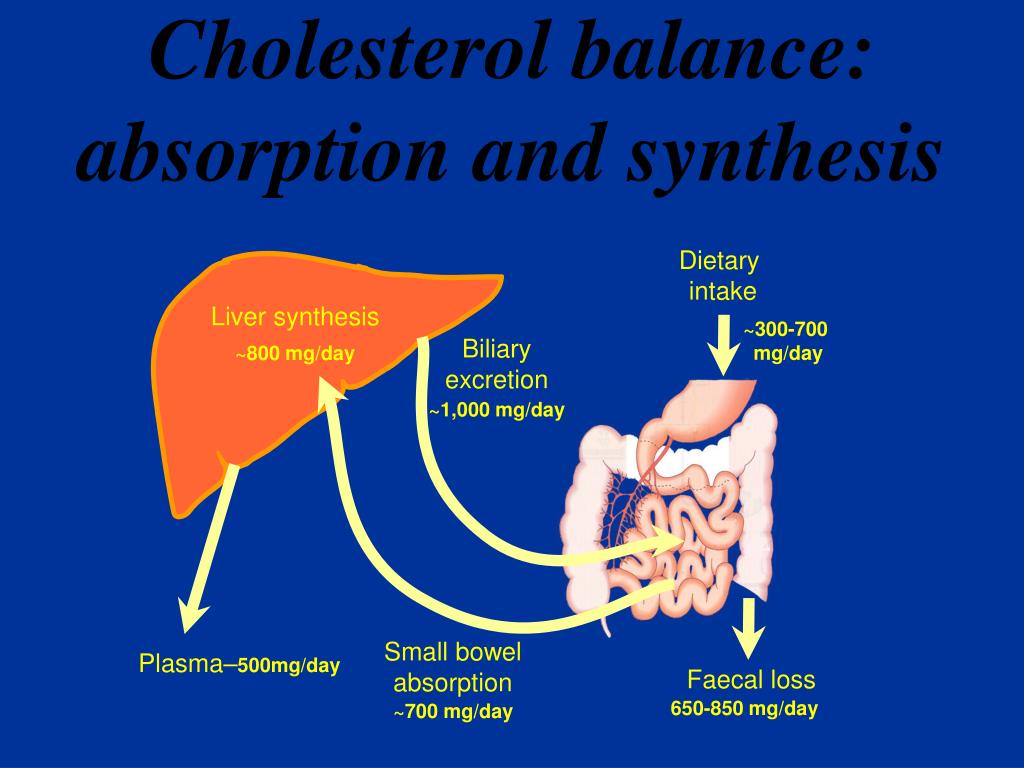
How does vitamin D enhance calcium absorption? Vitamin D stimulates the production of calcium-binding protein (calbindin) in the intestinal cells. This protein helps transport calcium across the intestinal wall and into the bloodstream. Additionally, vitamin D increases the expression of calcium channel proteins, such as TRPV6, which facilitate calcium entry into the cells.
Parathyroid Hormone (PTH)
Parathyroid hormone is another crucial player in calcium homeostasis. It indirectly enhances calcium absorption by stimulating the production of 1,25(OH)2D3 in the kidneys. When calcium levels in the blood are low, PTH is secreted, triggering a cascade of events that ultimately increase calcium absorption in the intestines.
Prolactin: An Unexpected Calcium Regulator
Recent research has shed light on the role of prolactin in calcium absorption, particularly during pregnancy and lactation. Prolactin, primarily known for its role in milk production, has been found to enhance intestinal calcium absorption through various mechanisms.

How does prolactin affect calcium absorption? Studies have shown that prolactin can increase the expression of calcium transport proteins in the intestines. It also enhances the activity of vitamin D receptors, amplifying the effects of vitamin D on calcium absorption. This hormonal interplay is particularly important during periods of increased calcium demand, such as pregnancy and lactation.
Luminal Factors Affecting Calcium Absorption
The environment within the intestinal lumen can significantly impact calcium absorption. Several factors in the gut can either enhance or inhibit the process.
Calcium Concentration in the Intestine
Interestingly, the concentration of calcium in the intestinal lumen can affect its own absorption. High luminal calcium concentrations can actually inhibit further calcium uptake, a mechanism that helps prevent excessive absorption.
Why does high luminal calcium inhibit absorption? This phenomenon is partly mediated by the calcium-sensing receptor (CaSR) present in intestinal cells. When activated by high calcium levels, CaSR can trigger signaling pathways that reduce calcium uptake, acting as a protective mechanism against calcium overload.
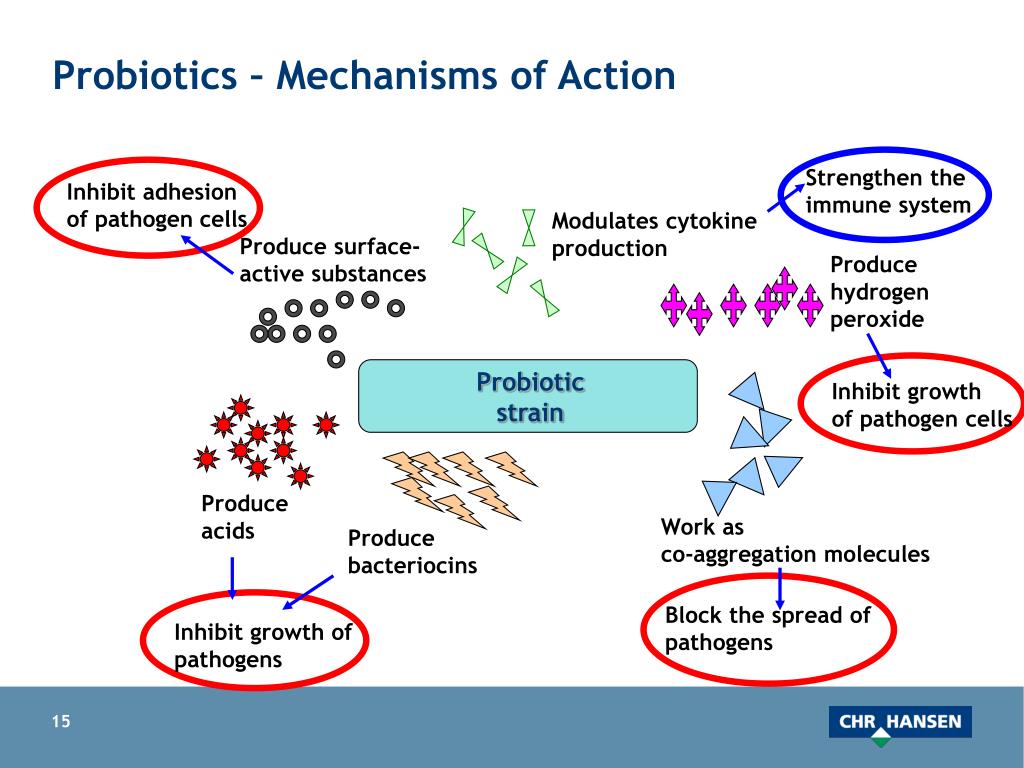
pH and Calcium Solubility
The pH of the intestinal environment plays a crucial role in calcium solubility and, consequently, its absorption. Calcium is more soluble in acidic conditions, which are typically found in the upper small intestine.
How does pH affect calcium absorption? In the duodenum and upper jejunum, where the environment is more acidic, calcium is more readily ionized and available for absorption. As the intestinal contents move further down the gastrointestinal tract and become more alkaline, calcium tends to form insoluble complexes, reducing its bioavailability.
Dietary Factors That Inhibit Calcium Absorption
While diet is a primary source of calcium, certain dietary components can actually hinder its absorption. Understanding these interactions is crucial for maintaining optimal calcium levels.
Phytates and Oxalates
Phytates (found in whole grains, legumes, and nuts) and oxalates (present in spinach, rhubarb, and some other vegetables) can bind to calcium, forming insoluble complexes that are poorly absorbed by the body.
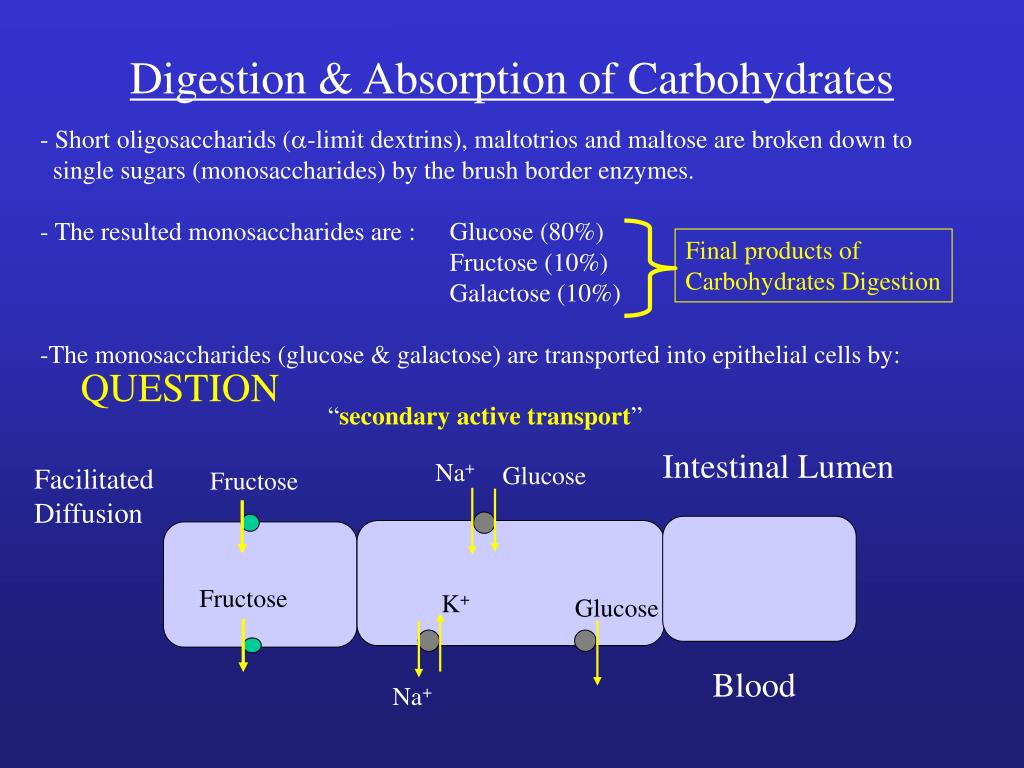
How do phytates and oxalates affect calcium absorption? These compounds can chelate calcium ions in the intestine, forming complexes that are not readily absorbed by the intestinal cells. This can significantly reduce the bioavailability of calcium from both the food sources containing these compounds and other calcium-rich foods consumed in the same meal.
Excessive Phosphorus Intake
While phosphorus is an essential mineral, excessive intake can interfere with calcium absorption. High phosphorus levels can lead to the formation of calcium phosphate complexes, which are less easily absorbed.
Why does high phosphorus intake affect calcium absorption? Excessive phosphorus can alter the calcium-phosphorus ratio in the body, potentially leading to increased parathyroid hormone secretion. This hormonal shift can affect bone metabolism and calcium homeostasis, indirectly impacting calcium absorption and utilization.
Age-Related Changes in Calcium Absorption
As we age, our body’s ability to absorb and utilize calcium changes. Understanding these age-related shifts is crucial for maintaining bone health throughout life.
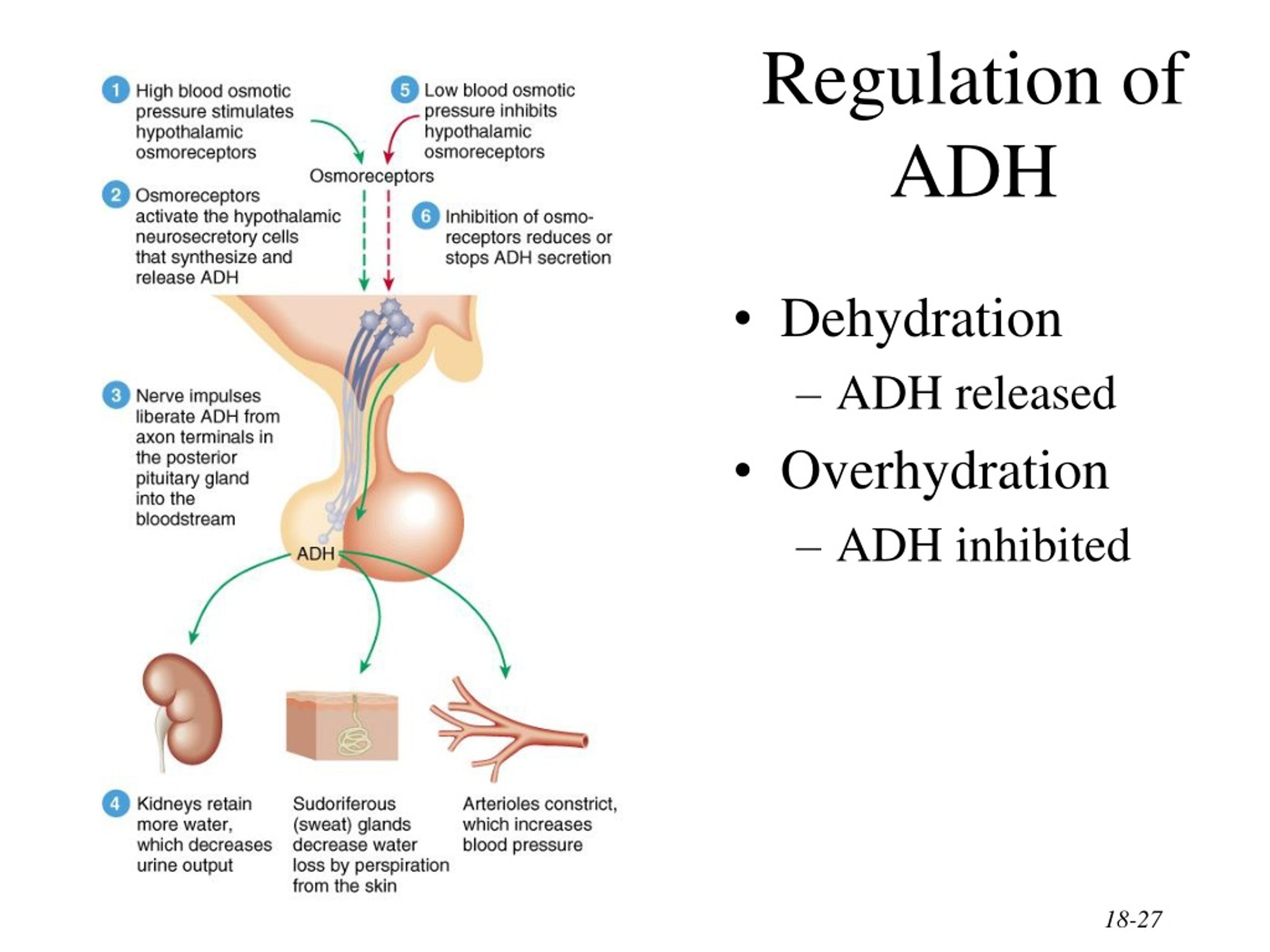
Decreased Intestinal Absorption Efficiency
Studies have shown that intestinal calcium absorption efficiency tends to decrease with age. This decline is attributed to various factors, including reduced production of digestive enzymes and decreased responsiveness to vitamin D.
How does aging affect calcium absorption at the cellular level? Aging can lead to a reduction in the number and activity of vitamin D receptors in the intestinal cells. Additionally, the expression of calcium transport proteins, such as TRPV6 and calbindin-D9k, may decrease with age. These changes collectively contribute to a less efficient calcium absorption process in older adults.
Hormonal Changes and Calcium Metabolism
Hormonal shifts that occur with aging can also impact calcium absorption and metabolism. For instance, the decline in estrogen levels during menopause can affect bone turnover and calcium homeostasis.
What role does estrogen play in calcium metabolism? Estrogen helps maintain bone density by promoting calcium absorption in the intestines and reducing calcium loss through urine. As estrogen levels decline during menopause, these protective effects diminish, potentially leading to increased calcium requirements and a higher risk of osteoporosis.
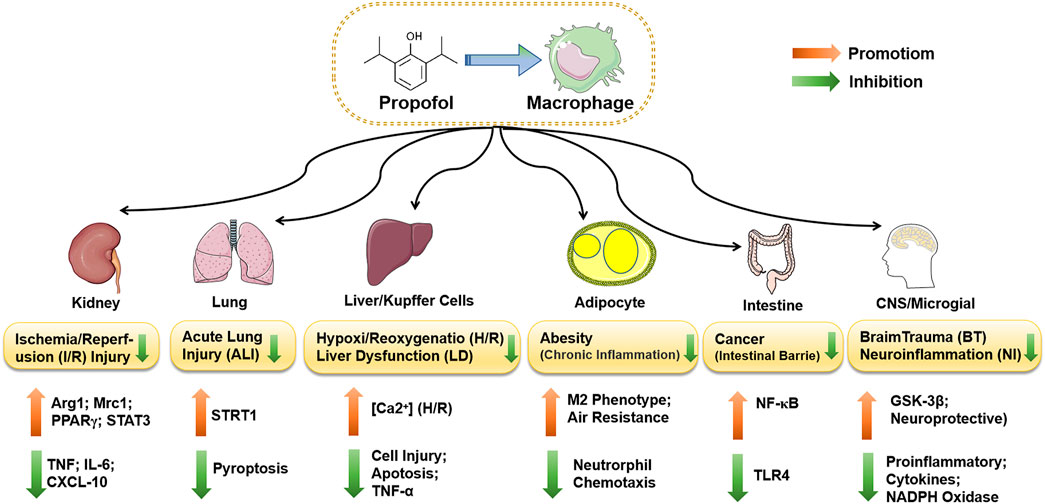
The Role of Intestinal Alkaline Phosphatase
Intestinal alkaline phosphatase (IAP) is an enzyme that plays a surprising role in calcium absorption. Recent research has highlighted its importance in regulating this process.
IAP and Calcium Absorption Regulation
Studies have shown that IAP activity is inversely related to calcium absorption. When luminal calcium concentrations are high, IAP activity increases, which in turn reduces calcium absorption.
How does IAP regulate calcium absorption? The exact mechanism is not fully understood, but it’s believed that IAP may modify the intestinal environment in a way that affects calcium solubility or the activity of calcium transport proteins. This regulatory role of IAP appears to be part of the body’s mechanism to prevent excessive calcium uptake.
Genetic Factors Influencing Calcium Absorption
Genetic variations can significantly impact an individual’s ability to absorb and metabolize calcium. Understanding these genetic factors can help in personalizing nutrition and supplementation strategies.
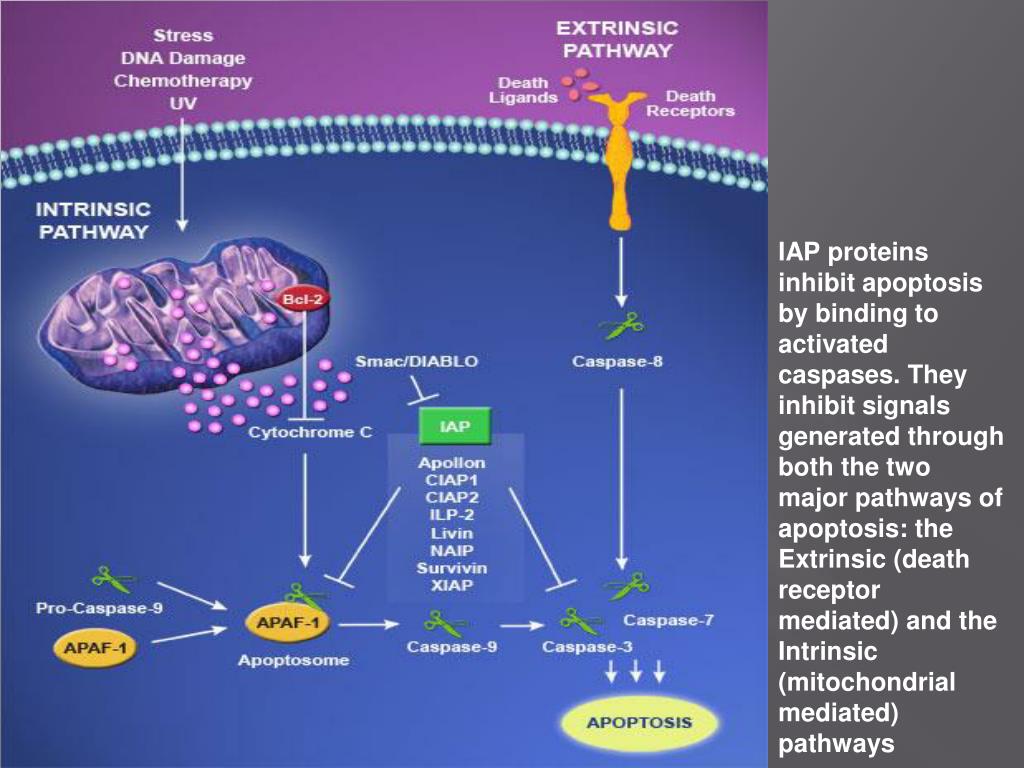
Vitamin D Receptor Polymorphisms
Variations in the vitamin D receptor (VDR) gene can affect how efficiently the body responds to vitamin D, which in turn influences calcium absorption.
How do VDR polymorphisms affect calcium absorption? Certain VDR gene variants may lead to reduced receptor functionality or expression. This can result in a diminished response to vitamin D, potentially leading to less efficient calcium absorption even when vitamin D levels are adequate.
Calcium-Sensing Receptor Variations
The calcium-sensing receptor (CaSR) plays a crucial role in regulating calcium homeostasis. Genetic variations in the CaSR gene can affect how the body responds to changes in calcium levels.
What impact do CaSR variations have on calcium metabolism? Some CaSR variants may alter the receptor’s sensitivity to calcium. This can affect parathyroid hormone secretion and calcium excretion, indirectly influencing calcium absorption and overall calcium balance in the body.
In conclusion, calcium absorption is a complex process influenced by a myriad of factors, including hormones, dietary components, age, and genetics. Understanding these factors is crucial for maintaining optimal calcium levels and bone health throughout life. By considering these various influences, healthcare professionals can provide more personalized recommendations for calcium intake and supplementation, taking into account individual differences in absorption efficiency and metabolic needs.
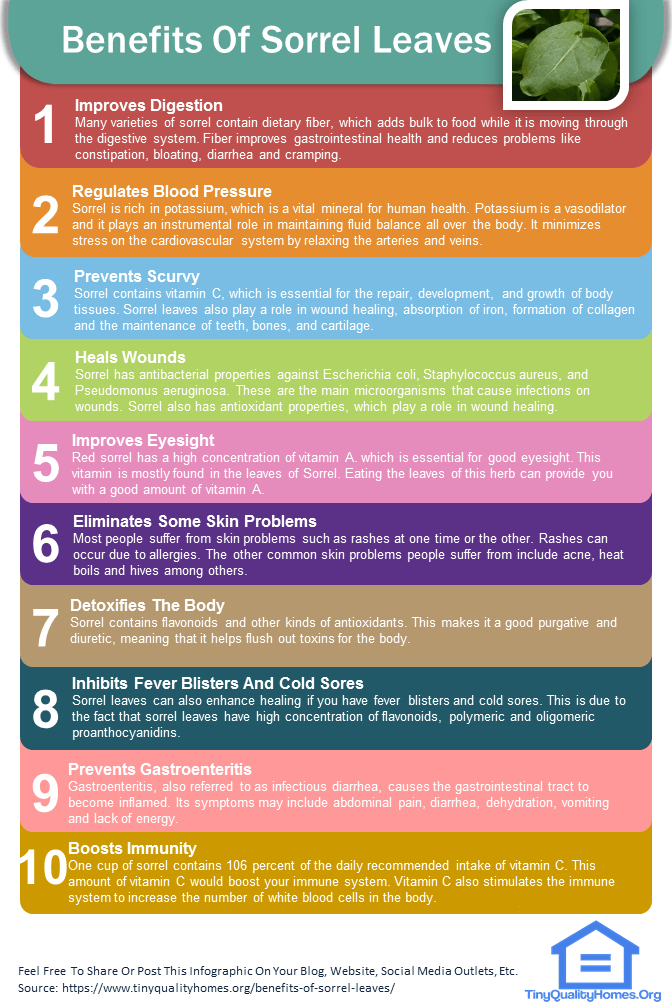
Factors inhibiting intestinal calcium absorption: hormones and luminal factors that prevent excessive calcium uptake | The Journal of Physiological Sciences
Abrams SA, Griffin IJ, Davila PM (2002) Calcium and zinc absorption from lactose-containing and lactose-free infant formulas. Am J Clin Nutr 76:442–446
Article
CAS
PubMed
Google Scholar
Amalraj A, Pius A (2015) Bioavailability of calcium and its absorption inhibitors in raw and cooked green leafy vegetables commonly consumed in India: an in vitro study. Food Chem 170:430–436
Article
CAS
PubMed
Google Scholar
Armbrecht HJ, Zenser TV, Gross CJ, Davis BB (1980) Adaptation to dietary calcium and phosphorus restriction changes with age in the rat. Am J Physiol 239:E322–E327
CAS
PubMed
Google Scholar
Benn BS, Ajibade D, Porta A, Dhawan P, Hediger M, Peng JB, Jiang Y, Oh GT, Jeung EB, Lieben L, Bouillon R, Carmeliet G, Christakos S (2008) Active intestinal calcium transport in the absence of transient receptor potential vanilloid type 6 and calbindin-D9k.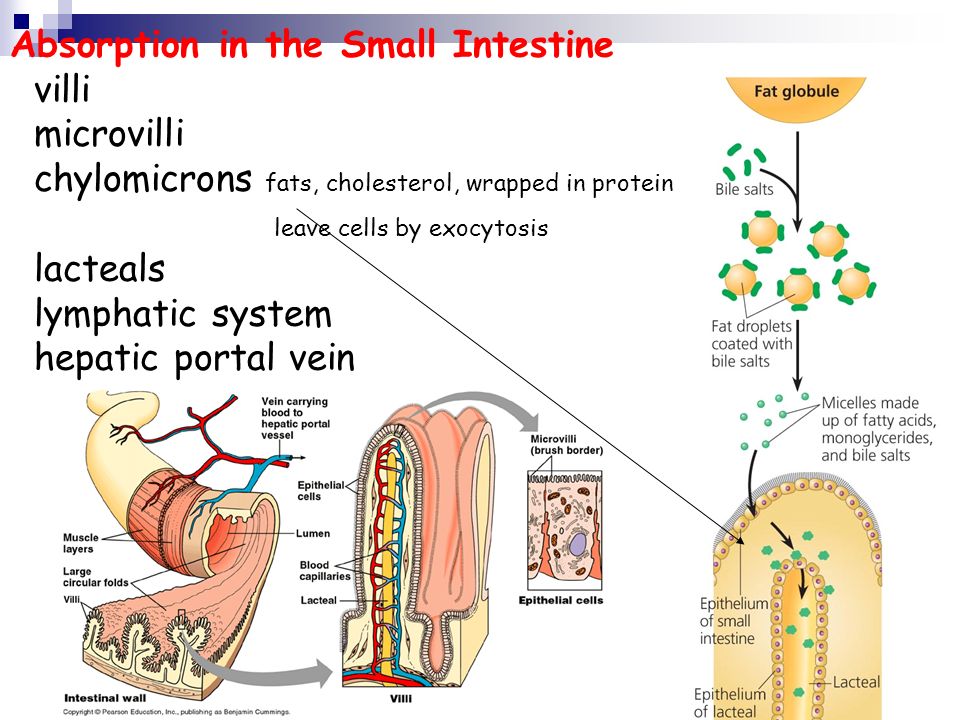 Endocrinology 149:3196–3205
Endocrinology 149:3196–3205
Article
CAS
PubMed
PubMed Central
Google Scholar
Binder HJ, Singh SK, Geibel JP, Rajendran VM (1997) Novel transport properties of colonic crypt cells: fluid absorption and Cl-dependent Na–H exchange. Comp Biochem Physiol A Physiol 118:265–269
Article
CAS
PubMed
Google Scholar
Blais A, Aymard P, Lacour B (1997) Paracellular calcium transport across Caco-2 and HT29 cell monolayers. Pflugers Arch 434:300–305
Article
CAS
PubMed
Google Scholar
Bronner F (2003) Mechanisms of intestinal calcium absorption. J Cell Biochem 88:387–393
Article
CAS
PubMed
Google Scholar
Brown AJ, Krits I, Armbrecht HJ (2005) Effect of age, vitamin D, and calcium on the regulation of rat intestinal epithelial calcium channels.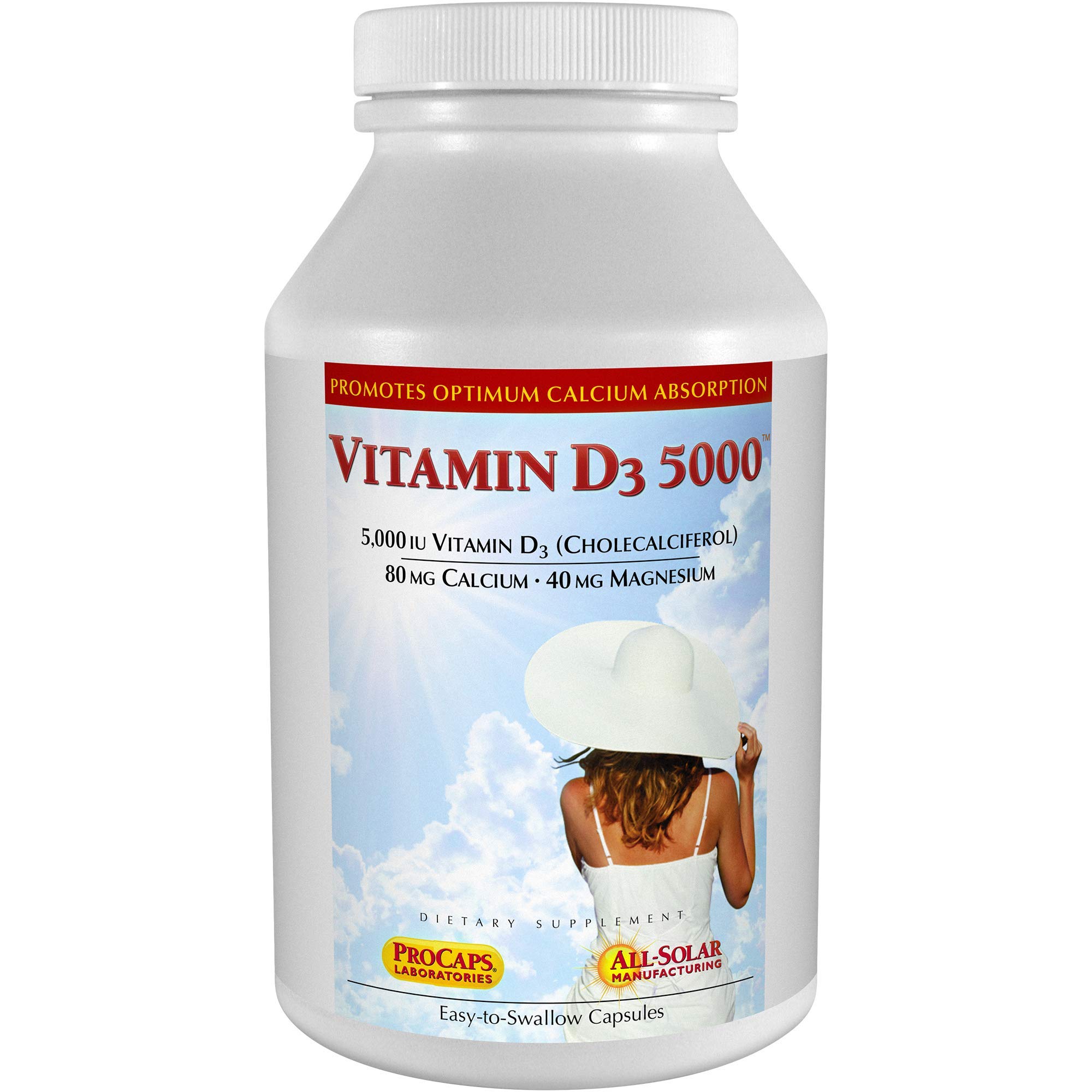 Arch Biochem Biophys 437:51–58
Arch Biochem Biophys 437:51–58
Article
CAS
PubMed
Google Scholar
Brun L, Brance M, Rigalli A (2012) Luminal calcium concentration controls intestinal calcium absorption by modification of intestinal alkaline phosphatase activity. Br J Nutr 108:229–233
Article
CAS
PubMed
Google Scholar
Centeno VA, Díaz de Barboza GE, Marchionatti AM, Alisio AE, Dallorso ME, Nasif R, Tolosa de Talamoni NG (2004) Dietary calcium deficiency increases Ca2+ uptake and Ca2+ extrusion mechanisms in chick enterocytes. Comp Biochem Physiol A Mol Integr Physiol 139:133–141
Article
CAS
PubMed
Google Scholar
Centeno V, Picotto G, Perez A, Alisio A, Tolosa de Talamoni N (2011) Intestinal Na+/Ca2+ exchanger protein and gene expression are regulated by 1,25(OH)2D3 in vitamin D-deficient chicks.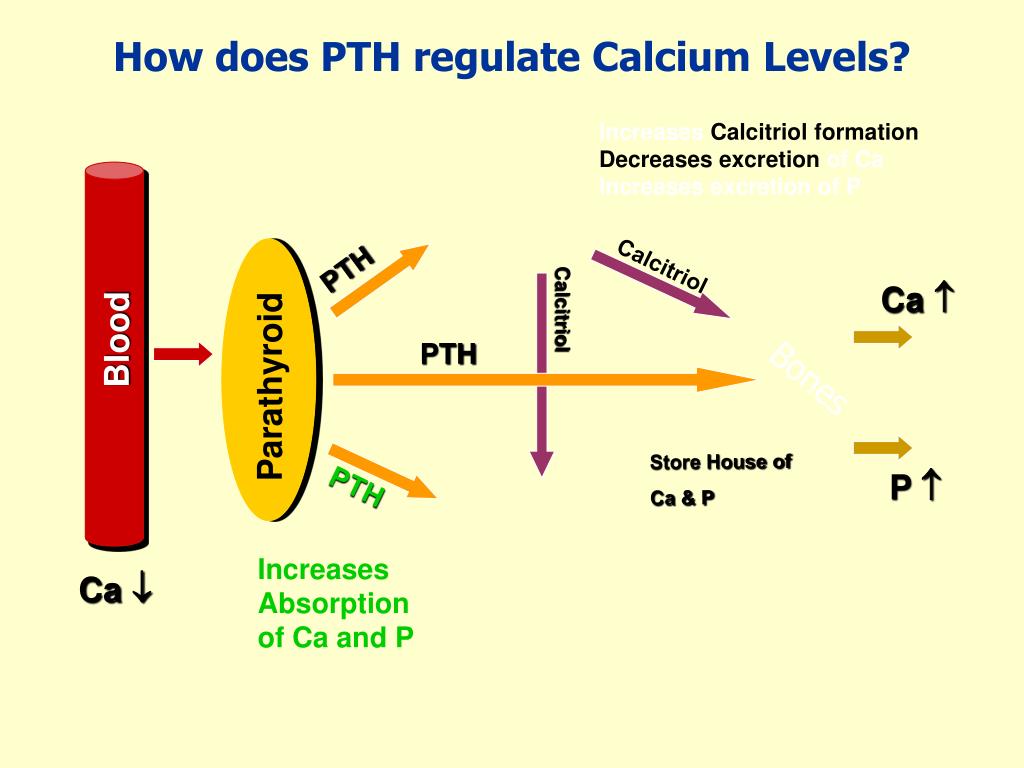 Arch Biochem Biophys 509:191–196
Arch Biochem Biophys 509:191–196
Article
CAS
PubMed
Google Scholar
Chang W, Shoback D (2004) Extracellular Ca2+-sensing receptors: an overview. Cell Calcium 35:183–196
Article
CAS
PubMed
Google Scholar
Charoenphandhu N, Krishnamra N (2007) Prolactin is an important regulator of intestinal calcium transport. Can J Physiol Pharmacol 85:569–581
Article
CAS
PubMed
Google Scholar
Charoenphandhu N, Nakkrasae LI, Kraidith K, Teerapornpuntakit J, Thongchote K, Thongon N, Krishnamra N (2009) Two-step stimulation of intestinal Ca2+ absorption during lactation by long-term prolactin exposure and suckling-induced prolactin surge. Am J Physiol Endocrinol Metab 297:E609–E619
Article
CAS
PubMed
Google Scholar
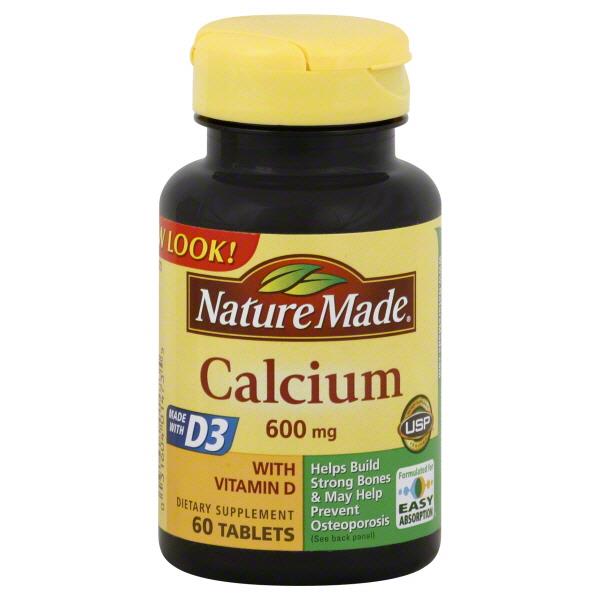
Charoenphandhu N, Wongdee K, Krishnamra N (2010) Is prolactin the cardinal calciotropic maternal hormone? Trends Endocrinol Metab 21:395–401
Article
CAS
PubMed
Google Scholar
Charoenphandhu N, Laohapitakworn S, Kraidith K, Nakkrasae LI, Jongwattanapisan P, Tharabenjasin P, Krishnamra N (2011) Electrogenic Na+/HCO3− co-transporter-1 is essential for the parathyroid hormone-stimulated intestinal HCO3− secretion. Biochem Biophys Res Commun 409:775–779
Article
CAS
PubMed
Google Scholar
Chattopadhyay N, Cheng I, Rogers K, Riccardi D, Hall A, Diaz R, Hebert SC, Soybel DI, Brown EM (1998) Identification and localization of extracellular Ca2+-sensing receptor in rat intestine. Am J Physiol 274:G122–G130
CAS
PubMed
Google Scholar
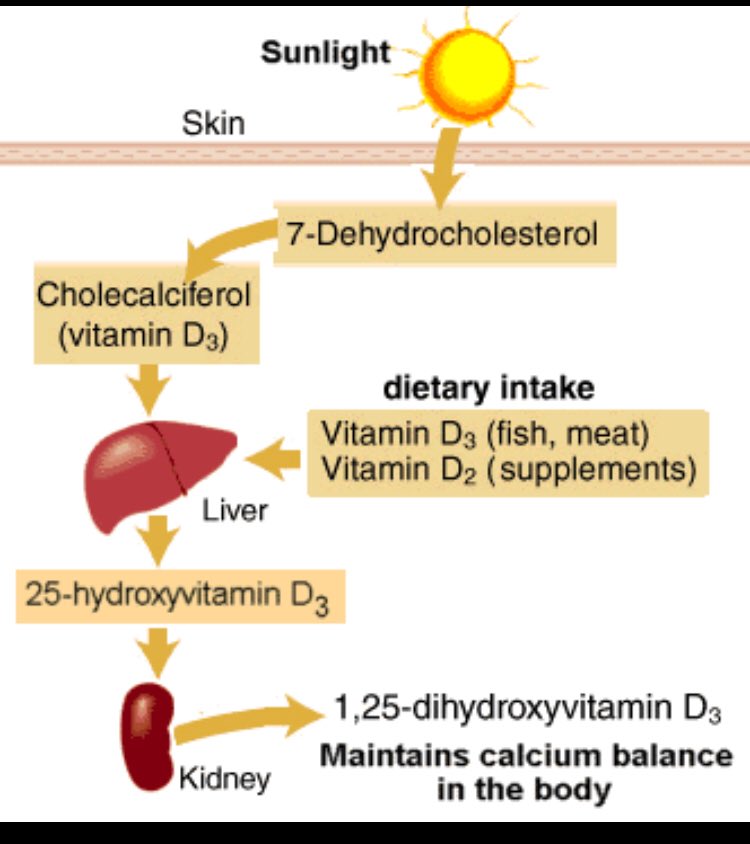
Cheng SX, Okuda M, Hall AE, Geibel JP, Hebert SC (2002) Expression of calcium-sensing receptor in rat colonic epithelium: evidence for modulation of fluid secretion. Am J Physiol Gastrointest Liver Physiol 283:G240–G250
Article
CAS
PubMed
Google Scholar
Cheng SX, Lightfoot YL, Yang T, Zadeh M, Tang L, Sahay B, Wang GP, Owen JL, Mohamadzadeh M (2014) Epithelial CaSR deficiency alters intestinal integrity and promotes proinflammatory immune responses. FEBS Lett 588:4158–4166
Article
CAS
PubMed
PubMed Central
Google Scholar
Christakos S (2012) Mechanism of action of 1,25-dihydroxyvitamin D3 on intestinal calcium absorption. Rev Endocr Metab Disord 13:39–44
Article
CAS
PubMed
Google Scholar
Colegio OR, Van Itallie C, Rahner C, Anderson JM (2003) Claudin extracellular domains determine paracellular charge selectivity and resistance but not tight junction fibril architecture. Am J Physiol Cell Physiol 284:C1346–C1354
Am J Physiol Cell Physiol 284:C1346–C1354
Article
CAS
PubMed
Google Scholar
Cook AE, Mistry SN, Gregory KJ, Furness SG, Sexton PM, Scammells PJ, Conigrave AD, Christopoulos A, Leach K (2015) Biased allosteric modulation at the CaS receptor engendered by structurally diverse calcimimetics. Br J Pharmacol 172:185–200
Article
CAS
PubMed
Google Scholar
Derler I, Hofbauer M, Kahr H, Fritsch R, Muik M, Kepplinger K, Hack ME, Moritz S, Schindl R, Groschner K, Romanin C (2006) Dynamic but not constitutive association of calmodulin with rat TRPV6 channels enables fine tuning of Ca2+-dependent inactivation. J Physiol 577:31–44
Article
CAS
PubMed
PubMed Central
Google Scholar
Diaz de Barboza G, Guizzardi S, Tolosa de Talamoni N (2015) Molecular aspects of intestinal calcium absorption.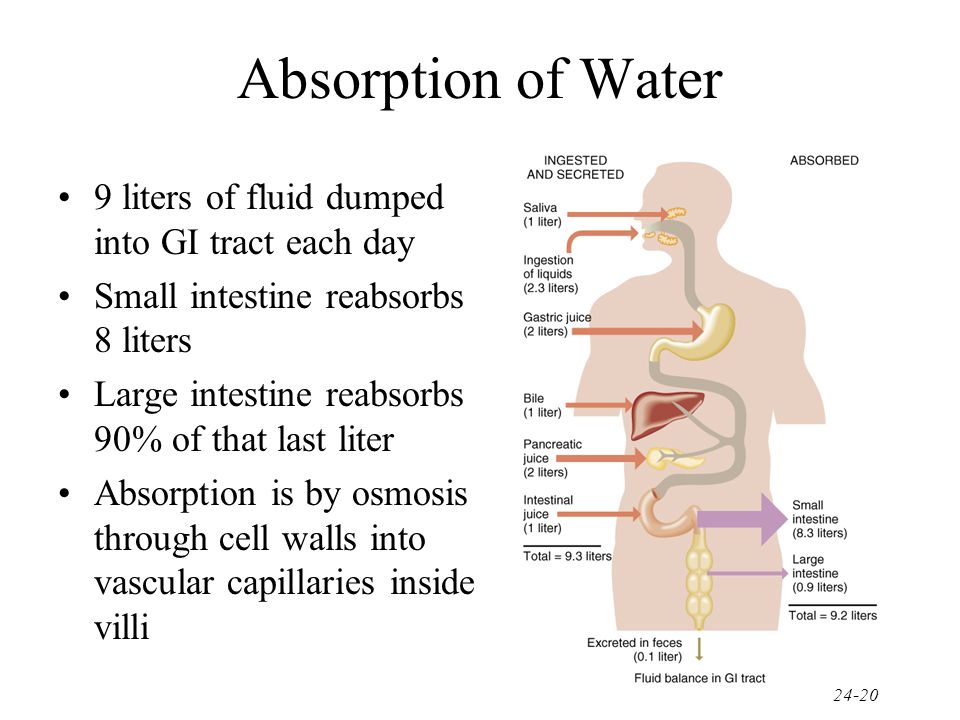 World J Gastroenterol 21:7142–7154
World J Gastroenterol 21:7142–7154
Article
CAS
PubMed
PubMed Central
Google Scholar
Diaz de Barboza G, Guizzardi S, Moine L, Tolosa de Talamoni N (2017) Oxidative stress, antioxidants and intestinal calcium absorption. World J Gastroenterol 23:2841–2853
Article
CAS
PubMed
PubMed Central
Google Scholar
Doroudi M, Schwartz Z, Boyan BD (2015) Membrane-mediated actions of 1,25-dihydroxy vitamin D3: a review of the roles of phospholipase A2 activating protein and Ca2+/calmodulin-dependent protein kinase II. J Steroid Biochem Mol Biol 147:81–84
Article
CAS
PubMed
Google Scholar
Douard V, Asgerally A, Sabbagh Y, Sugiura S, Shapses SA, Casirola D, Ferraris RP (2010) Dietary fructose inhibits intestinal calcium absorption and induces vitamin D insufficiency in CKD.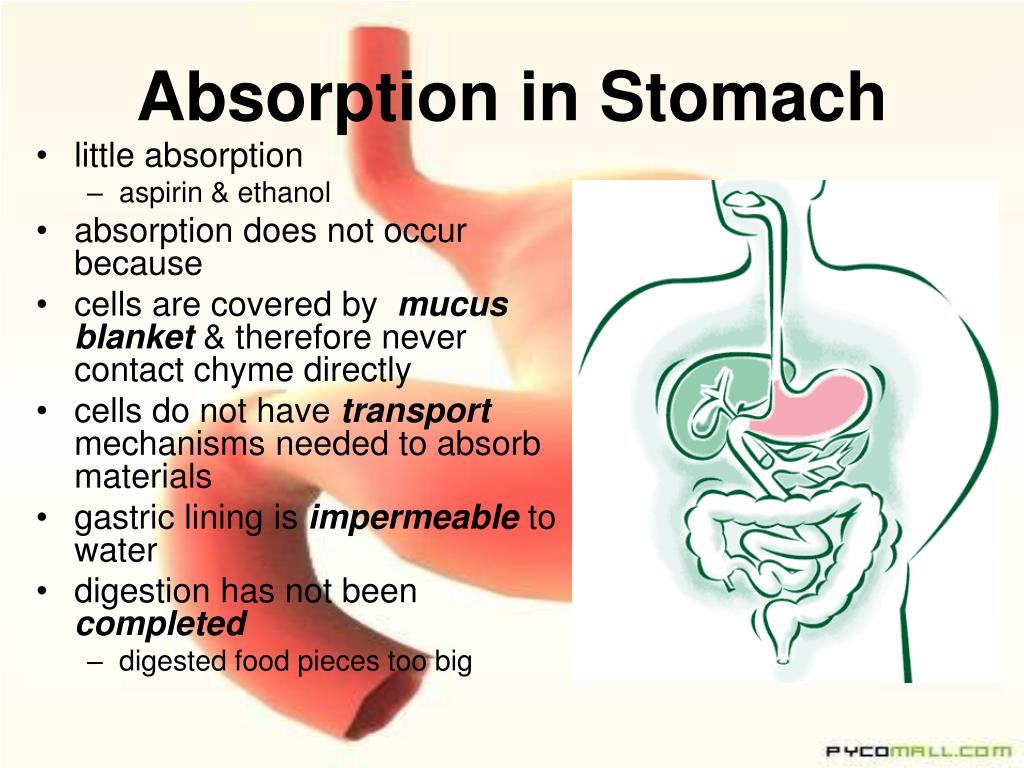 J Am Soc Nephrol 21:261–271
J Am Soc Nephrol 21:261–271
Article
CAS
PubMed
PubMed Central
Google Scholar
Douard V, Sabbagh Y, Lee J, Patel C, Kemp FW, Bogden JD, Lin S, Ferraris RP (2013) Excessive fructose intake causes 1,25-(OH)2D3-dependent inhibition of intestinal and renal calcium transport in growing rats. Am J Physiol Endocrinol Metab 304:E1303–E1313
Article
CAS
PubMed
PubMed Central
Google Scholar
Fleet JC (2004) Rapid, membrane-initiated actions of 1,25 dihydroxyvitamin D: what are they and what do they mean? J Nutr 134:3215–3218
Article
CAS
PubMed
Google Scholar
Fleet JC, Schoch RD (2010) Molecular mechanisms for regulation of intestinal calcium absorption by vitamin D and other factors. Crit Rev Clin Lab Sci 47:181–195
Article
CAS
PubMed
PubMed Central
Google Scholar
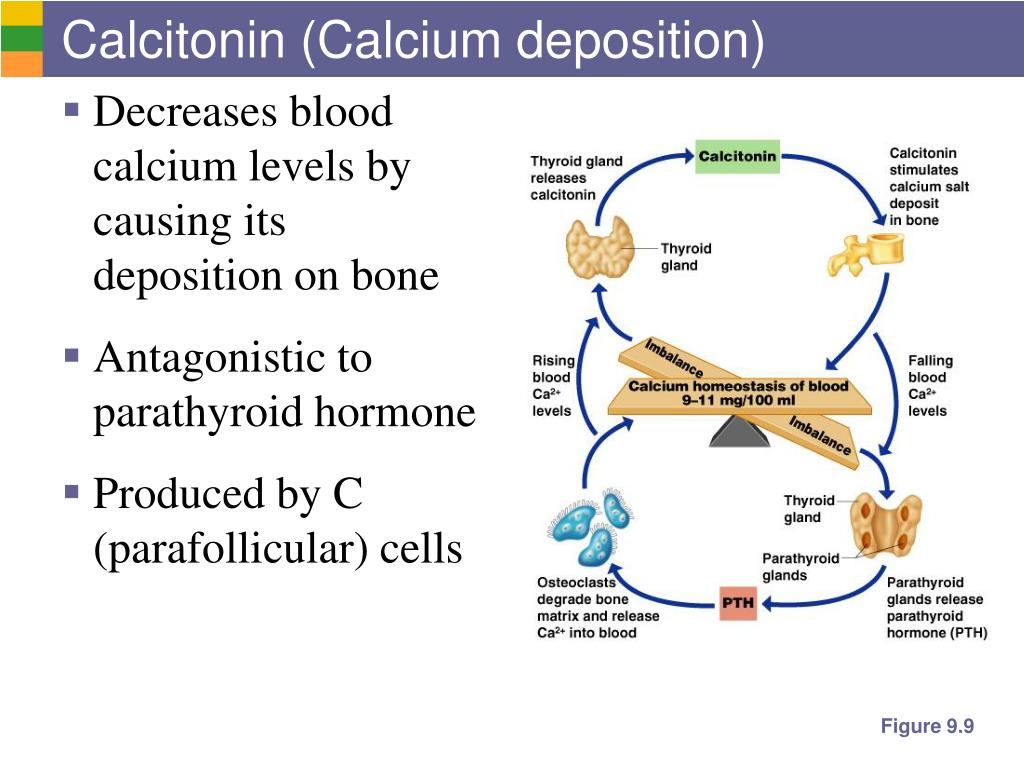
Fordtran JS, Locklear TW (1966) Ionic constituents and osmolality of gastric and small-intestinal fluids after eating. Am J Dig Dis 11:503–521
Article
CAS
PubMed
Google Scholar
Fujita H, Sugimoto K, Inatomi S, Maeda T, Osanai M, Uchiyama Y, Yamamoto Y, Wada T, Kojima T, Yokozaki H, Yamashita T, Kato S, Sawada N, Chiba H (2008) Tight junction proteins claudin-2 and -12 are critical for vitamin D-dependent Ca2+ absorption between enterocytes. Mol Biol Cell 19:1912–1921
Article
CAS
PubMed
PubMed Central
Google Scholar
Gattineni J, Bates C, Twombley K, Dwarakanath V, Robinson ML, Goetz R, Mohammadi M, Baum M (2009) FGF23 decreases renal NaPi-2a and NaPi-2c expression and induces hypophosphatemia in vivo predominantly via FGF receptor 1. Am J Physiol Renal Physiol 297:F282–F291
Article
CAS
PubMed
PubMed Central
Google Scholar
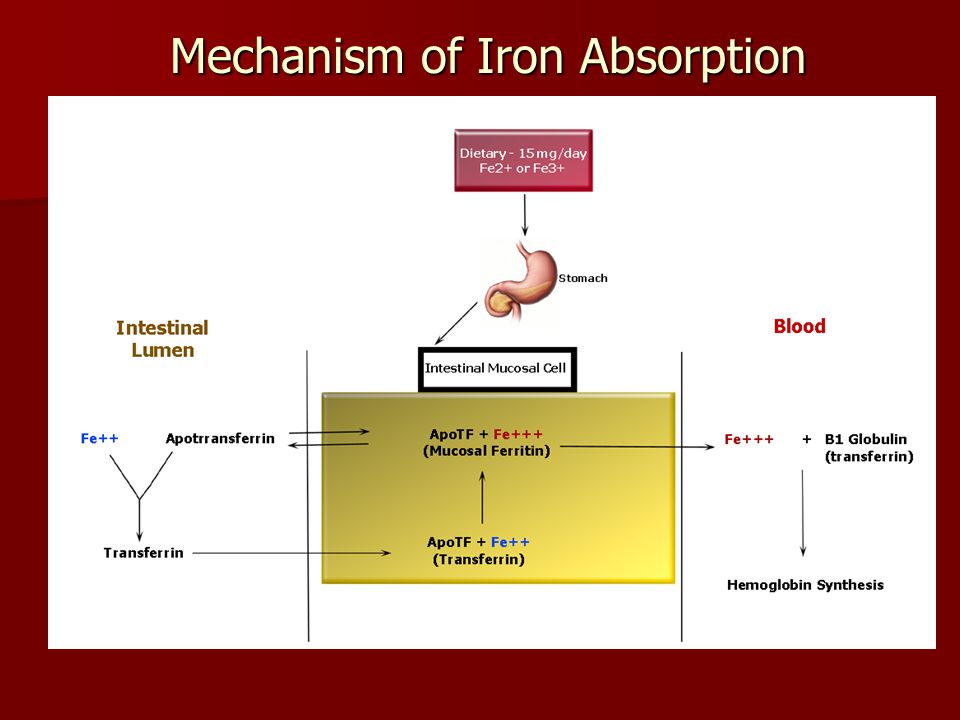
Gattineni J, Alphonse P, Zhang Q, Mathews N, Bates CM, Baum M (2014) Regulation of renal phosphate transport by FGF23 is mediated by FGFR1 and FGFR4. Am J Physiol Renal Physiol 306:F351–F358
Article
CAS
PubMed
Google Scholar
Geibel J, Sritharan K, Geibel R, Geibel P, Persing JS, Seeger A, Roepke TK, Deichstetter M, Prinz C, Cheng SX, Martin D, Hebert SC (2006) Calcium-sensing receptor abrogates secretagogue-induced increases in intestinal net fluid secretion by enhancing cyclic nucleotide destruction. Proc Natl Acad Sci USA 103:9390–9397
Article
CAS
PubMed
Google Scholar
Gentili C, Morelli S, de Boland AR (2003) Characterization of PTH/PTHrP receptor in rat duodenum: effects of ageing. J Cell Biochem 88:1157–1167
Article
CAS
PubMed
Google Scholar
Goltzman D (2018) Physiology of parathyroid hormone.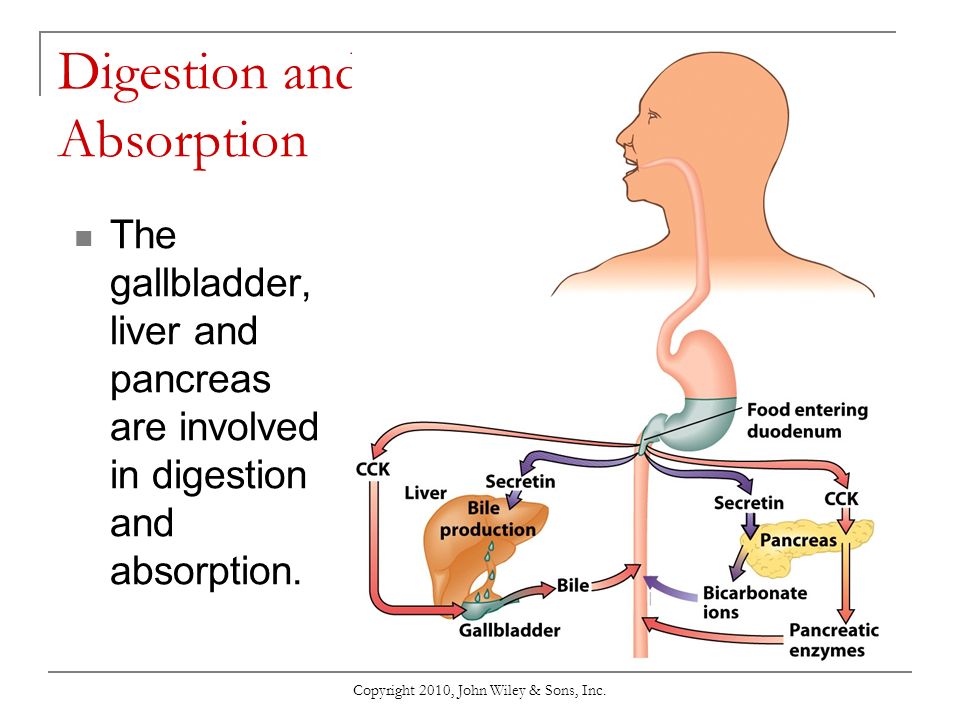 Endocrinol Metab Clin North Am 47:743–758
Endocrinol Metab Clin North Am 47:743–758
Article
PubMed
Google Scholar
Gulec S, Anderson GJ, Collins JF (2014) Mechanistic and regulatory aspects of intestinal iron absorption. Am J Physiol Gastrointest Liver Physiol 307:G397–G409
Article
CAS
PubMed
PubMed Central
Google Scholar
Guo YC, Yuan Q (2015) Fibroblast growth factor 23 and bone mineralisation. Int J Oral Sci 7:8–13
Article
CAS
PubMed
PubMed Central
Google Scholar
Haussler MR, Jurutka PW, Mizwicki M, Norman AW (2011) Vitamin D receptor (VDR)-mediated actions of 1α,25(OH)2vitamin D3: genomic and non-genomic mechanisms. Best Pract Res Clin Endocrinol Metab 25:543–559
Article
CAS
PubMed
Google Scholar
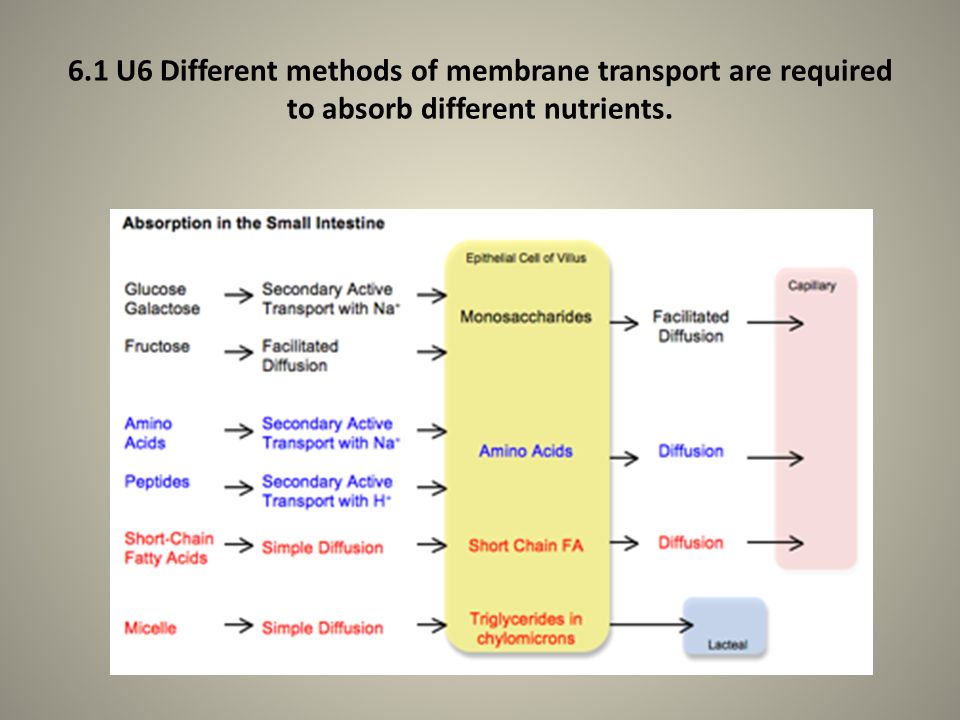
Hebert SC, Cheng S, Geibel J (2004) Functions and roles of the extracellular Ca2+-sensing receptor in the gastrointestinal tract. Cell Calcium 35:239–247
Article
CAS
PubMed
Google Scholar
Honda S, Kashiwagi M, Ookata K, Tojo A, Hirose S (1999) Regulation by 1α,25-dihydroxyvitamin D3 of expression of stanniocalcin messages in the rat kidney and ovary. FEBS Lett 459:119–122
Article
CAS
PubMed
Google Scholar
Houston J, Smith K, Isakova T, Sowden N, Wolf M, Gutierrez OM (2013) Associations of dietary phosphorus intake, urinary phosphate excretion, and fibroblast growth factor 23 with vascular stiffness in chronic kidney disease. J Ren Nutr 23:12–20
Article
CAS
PubMed
Google Scholar
Hung NT, Yamamoto H, Takei Y, Masuda M, Otani A, Kozai M, Ikeda S, Nakahashi O, Tanaka S, Taketani Y, Takeda E (2012) Up-regulation of stanniocalcin 1 expression by 1,25-dihydroxy vitamin D3 and parathyroid hormone in renal proximal tubular cells. J Clin Biochem Nutr 50:227–233
J Clin Biochem Nutr 50:227–233
Article
CAS
PubMed
Google Scholar
Ishibashi K, Imai M (2002) Prospect of a stanniocalcin endocrine/paracrine system in mammals. Am J Physiol Renal Physiol 282:F367–F375
Article
CAS
PubMed
Google Scholar
Ishizawa M, Akagi D, Makishima M (2018) Lithocholic acid is a vitamin D receptor ligand that acts preferentially in the ileum. Int J Mol Sci 19:1975
Article
CAS
PubMed Central
Google Scholar
Jando J, Camargo SMR, Herzog B, Verrey F (2017) Expression and regulation of the neutral amino acid transporter B0AT1 in rat small intestine. PLoS One 12:e0184845
Article
CAS
PubMed
PubMed Central
Google Scholar
Jantarajit W, Thongon N, Pandaranandaka J, Teerapornpuntakit J, Krishnamra N, Charoenphandhu N (2007) Prolactin-stimulated transepithelial calcium transport in duodenum and Caco-2 monolayer are mediated by the phosphoinositide 3-kinase pathway. Am J Physiol Endocrinol Metab 293:E372–E384
Am J Physiol Endocrinol Metab 293:E372–E384
Article
CAS
PubMed
Google Scholar
Jimbo R, Kawakami-Mori F, Mu S, Hirohama D, Majtan B, Shimizu Y, Yatomi Y, Fukumoto S, Fujita T, Shimosawa T (2014) Fibroblast growth factor 23 accelerates phosphate-induced vascular calcification in the absence of klotho deficiency. Kidney Int 85:1103–1111
Article
CAS
PubMed
Google Scholar
Jongwattanapisan P, Suntornsaratoon P, Wongdee K, Dorkkam N, Krishnamra N, Charoenphandhu N (2012) Impaired body calcium metabolism with low bone density and compensatory colonic calcium absorption in cecectomized rats. Am J Physiol Endocrinol Metab 302:E852–E863
Article
CAS
PubMed
Google Scholar
Jüppner H (2011) Phosphate and FGF-23. Kidney Int 79:S24–S27
Article
CAS
Google Scholar
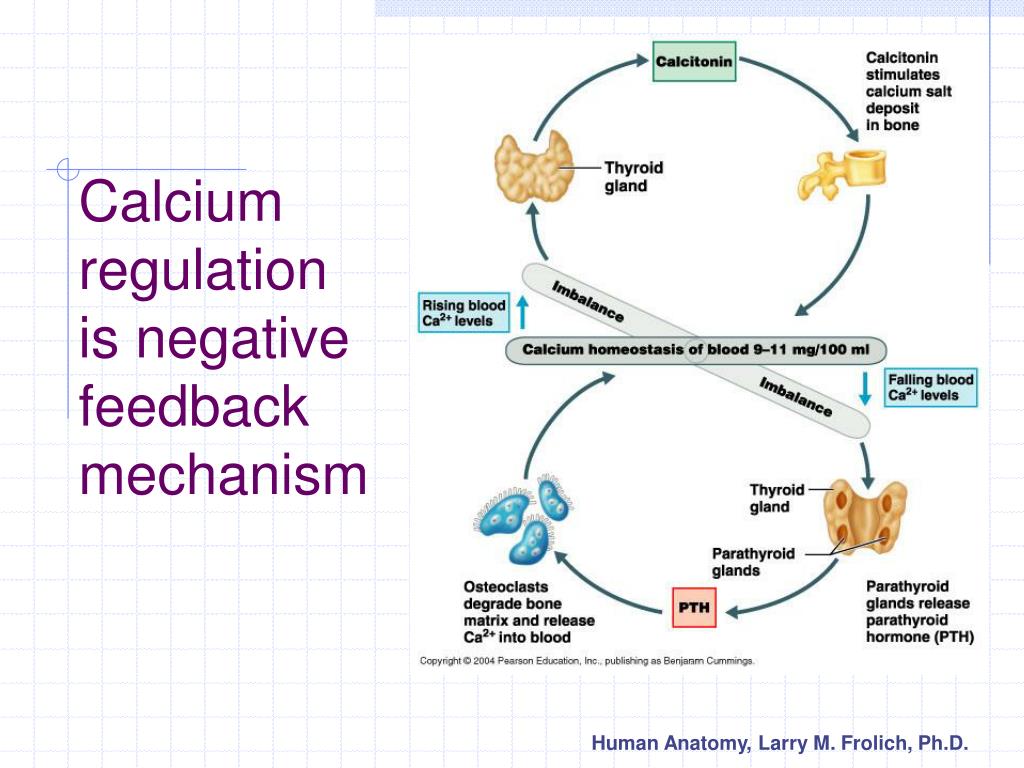
Kellett GL (2011) Alternative perspective on intestinal calcium absorption: proposed complementary actions of Cav1.3 and TRPV6. Nutr Rev 69:347–370
Article
PubMed
Google Scholar
Khuituan P, Teerapornpuntakit J, Wongdee K, Suntornsaratoon P, Konthapakdee N, Sangsaksri J, Sripong C, Krishnamra N, Charoenphandhu N (2012) Fibroblast growth factor-23 abolishes 1,25-dihydroxyvitamin D3-enhanced duodenal calcium transport in male mice. Am J Physiol Endocrinol Metab 302:E903–E913
Article
CAS
PubMed
Google Scholar
Khuituan P, Wongdee K, Jantarajit W, Suntornsaratoon P, Krishnamra N, Charoenphandhu N (2013) Fibroblast growth factor-23 negates 1,25(OH)2D3-induced intestinal calcium transport by reducing the transcellular and paracellular calcium fluxes. Arch Biochem Biophys 536:46–52
Article
CAS
PubMed
Google Scholar
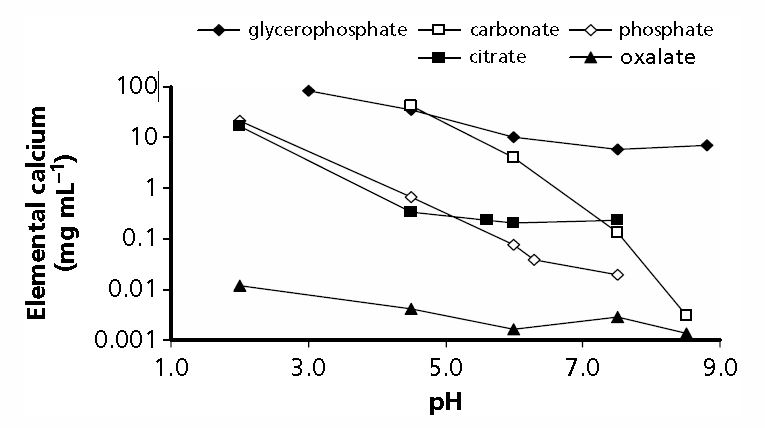
Kobayashi R, Nakagomi Y, Shimura Y, Mochizuki M, Kobayashi K, Sugita K, Ohyama K (2009) Expression of stanniocalcin-1 in gastrointestinal tracts of neonatal and mature rats. Biochem Biophys Res Commun 389:478–483
Article
CAS
PubMed
Google Scholar
Kolek OI, Hines ER, Jones MD, LeSueur LK, Lipko MA, Kiela PR, Collins JF, Haussler MR, Ghishan FK (2005) 1α,25-dihydroxyvitamin D3 upregulates FGF23 gene expression in bone: the final link in a renal-gastrointestinal-skeletal axis that controls phosphate transport. Am J Physiol Gastrointest Liver Physiol 289:G1036–G1042
Article
CAS
PubMed
Google Scholar
Kopic S, Geibel JP (2013) Gastric acid, calcium absorption, and their impact on bone health. Physiol Rev 93:189–268
Article
CAS
PubMed
Google Scholar
Kraidith K, Svasti S, Teerapornpuntakit J, Vadolas J, Chaimana R, Lapmanee S, Suntornsaratoon P, Krishnamra N, Fucharoen S, Charoenphandhu N (2016) Hepcidin and 1,25(OH)2D3 effectively restore Ca2+ transport in β-thalassemic mice: reciprocal phenomenon of Fe2+ and Ca2+ absorption. Am J Physiol Endocrinol Metab 311:E214–E223
Am J Physiol Endocrinol Metab 311:E214–E223
Article
PubMed
Google Scholar
Kumar V, Abbas AK, Aster JC (2015) Cellular responses to stress and toxic insults: adaptation, injury, and death. In: Kumar V, Abbas AK, Aster JC (eds) Robbins and Cotran pathologic basis of disease, 9th edn. Elsevier Saunders, Philadelphia, pp 31–68
Google Scholar
Lamireau T, Zoltowska M, Levy E, Yousef I, Rosenbaum J, Tuchweber B, Desmouliere A (2003) Effects of bile acids on biliary epithelial cells: proliferation, cytotoxicity, and cytokine secretion. Life Sci 72:1401–1411
Article
CAS
PubMed
Google Scholar
Laohapitakworn S, Thongbunchoo J, Nakkrasae LI, Krishnamra N, Charoenphandhu N (2011) Parathyroid hormone (PTH) rapidly enhances CFTR-mediated HCO3− secretion in intestinal epithelium-like Caco-2 monolayer: a novel ion regulatory action of PTH. Am J Physiol Cell Physiol 301:C137–C149
Am J Physiol Cell Physiol 301:C137–C149
Article
CAS
PubMed
Google Scholar
Lee D, Obukhov AG, Shen Q, Liu Y, Dhawan P, Nowycky MC, Christakos S (2006) Calbindin-D28k decreases L-type calcium channel activity and modulates intracellular calcium homeostasis in response to K+ depolarization in a rat beta cell line RINr1046-38. Cell Calcium 39:475–485
Article
CAS
PubMed
Google Scholar
Lertsuwan K, Wongdee K, Teerapornpuntakit J, Charoenphandhu N (2018) Intestinal calcium transport and its regulation in thalassemia: interaction between calcium and iron metabolism. J Physiol Sci 68:221–232
Article
CAS
PubMed
Google Scholar
Liu S, Tang W, Zhou J, Stubbs JR, Luo Q, Pi M, Quarles LD (2006) Fibroblast growth factor 23 is a counter-regulatory phosphaturic hormone for vitamin D.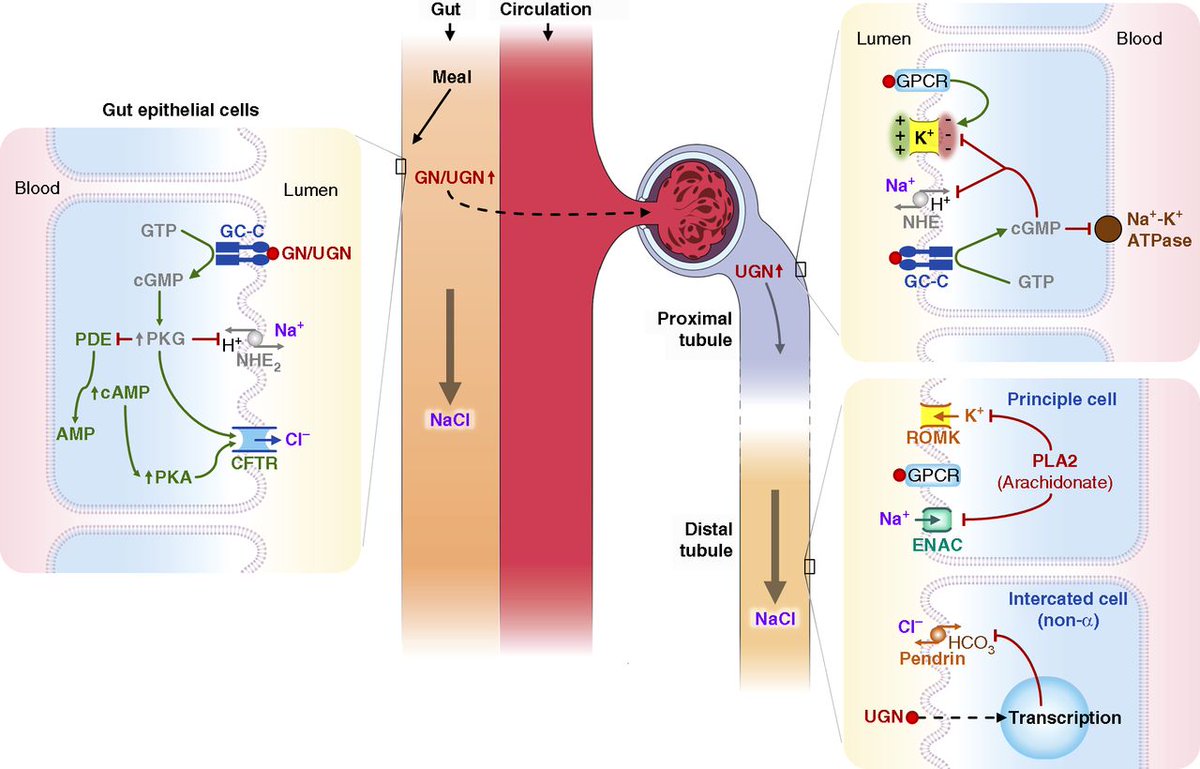 J Am Soc Nephrol 17:1305–1315
J Am Soc Nephrol 17:1305–1315
Article
CAS
PubMed
Google Scholar
Madsen KL, Tavernini MM, Yachimec C, Mendrick DL, Alfonso PJ, Buergin M, Olsen HS, Antonaccio MJ, Thomson AB, Fedorak RN (1998) Stanniocalcin: a novel protein regulating calcium and phosphate transport across mammalian intestine. Am J Physiol 274:G96–G102
CAS
PubMed
Google Scholar
Marchionatti A, Rivoira M, Rodriguez V, Perez A, Tolosa de Talamoni N (2018) Molecular mechanisms triggered by bile acids on intestinal Ca2+ absorption. Curr Med Chem 25:2122–2132
Article
CAS
PubMed
Google Scholar
Mittal R, Debs LH, Patel AP, Nguyen D, Patel K, O’Connor G, Grati M, Mittal J, Yan D, Eshraghi AA, Deo SK, Daunert S, Liu XZ (2017) Neurotransmitters: the critical modulators regulating gut-brain axis. J Cell Physiol 232:2359–2372
J Cell Physiol 232:2359–2372
Article
CAS
PubMed
PubMed Central
Google Scholar
Morgan EL, Mace OJ, Affleck J, Kellett GL (2007) Apical GLUT2 and Cav1.3: regulation of rat intestinal glucose and calcium absorption. J Physiol 580:593–604
Article
CAS
PubMed
PubMed Central
Google Scholar
Mosha TC, Gaga HE, Pace RD, Laswai HS, Mtebe K (1995) Effect of blanching on the content of antinutritional factors in selected vegetables. Plant Foods Hum Nutr 47:361–367
Article
CAS
PubMed
Google Scholar
Murgue B, Tsunekawa S, Rosenberg I, deBeaumont M, Podolsky DK (1994) Identification of a novel variant form of fibroblast growth factor receptor 3 (FGFR3 IIIb) in human colonic epithelium. Cancer Res 54:5206–5211
CAS
PubMed
Google Scholar
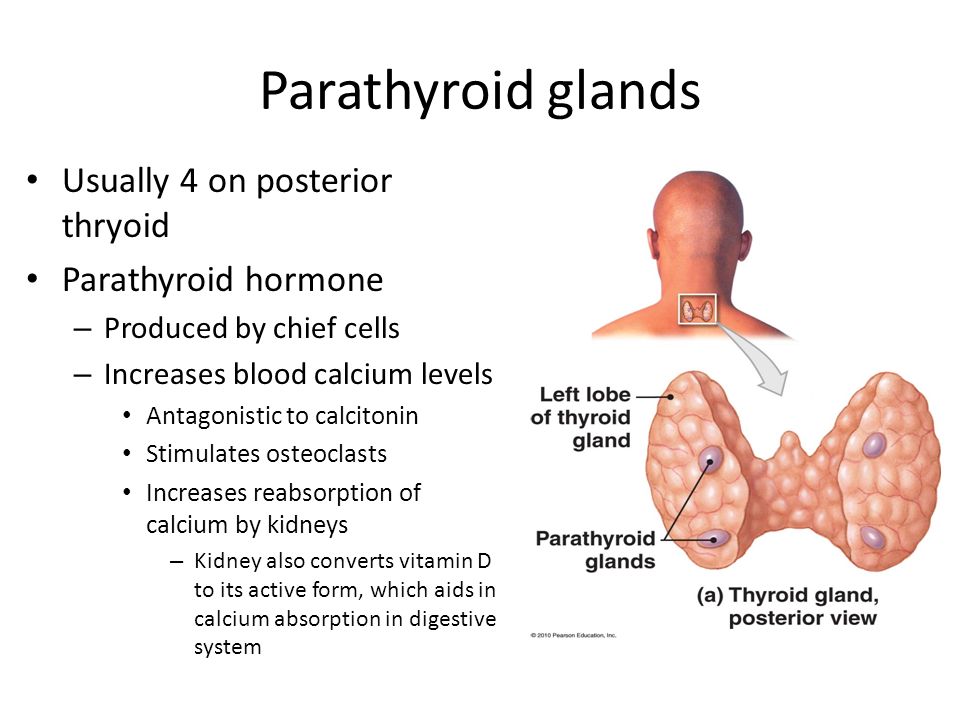
Nemere I, Norman AW (1986) Parathyroid hormone stimulates calcium transport in perfused duodena from normal chicks: comparison with the rapid (transcaltachic) effect of 1,25-dihydroxyvitamin D3. Endocrinology 119:1406–1408
Article
CAS
PubMed
Google Scholar
Nemere I, Garbi N, Hammerling GJ, Khanal RC (2010) Intestinal cell calcium uptake and the targeted knockout of the 1,25D3-MARRS (membrane-associated, rapid response steroid-binding) receptor/PDIA3/Erp57. J Biol Chem 285:31859–31866
Article
CAS
PubMed
PubMed Central
Google Scholar
Nilsson B, Delbro D, Friman S, Thune A, Svanvik J (1996) Sympathetic and VIP-ergic control of calcium and bicarbonate transport in the feline gall bladder mucosa in vivo. J Auton Nerv Syst 60:49–55
Article
CAS
PubMed
Google Scholar

Noonan WT, Woo AL, Nieman ML, Prasad V, Schultheis PJ, Shull GE, Lorenz JN (2005) Blood pressure maintenance in NHE3-deficient mice with transgenic expression of NHE3 in small intestine. Am J Physiol Regul Integr Comp Physiol 288:R685–R691
Article
CAS
PubMed
Google Scholar
Norman AW (2006) Minireview: vitamin D receptor: new assignments for an already busy receptor. Endocrinology 147:5542–5548
Article
CAS
PubMed
Google Scholar
O’Grady SM, Jiang X, Maniak PJ, Birmachu W, Scribner LR, Bulbulian B, Gullikson GW (2002) Cyclic AMP-dependent Cl secretion is regulated by multiple phosphodiesterase subtypes in human colonic epithelial cells. J Membr Biol 185:137–144
Article
CAS
PubMed
Google Scholar
Owen JL, Cheng SX, Ge Y, Sahay B, Mohamadzadeh M (2016) The role of the calcium-sensing receptor in gastrointestinal inflammation.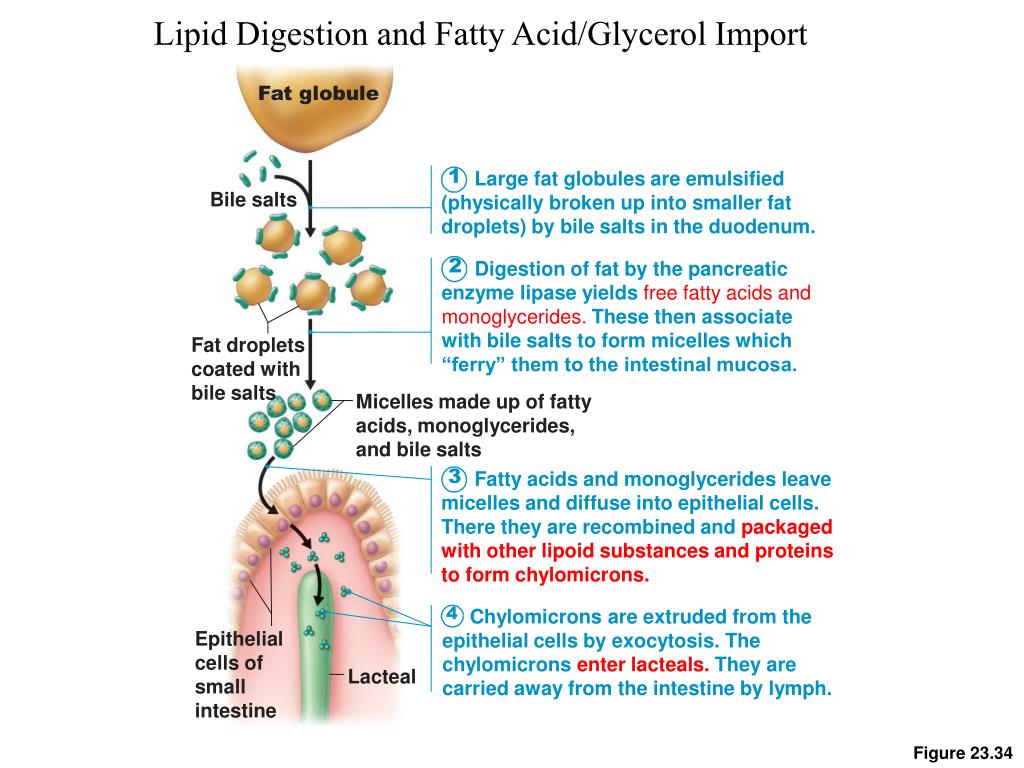 Semin Cell Dev Biol 49:44–51
Semin Cell Dev Biol 49:44–51
Article
CAS
PubMed
Google Scholar
Quarles LD (2012) Skeletal secretion of FGF-23 regulates phosphate and vitamin D metabolism. Nat Rev Endocrinol 8:276–286
Article
CAS
PubMed
PubMed Central
Google Scholar
Quinn SJ, Thomsen AR, Pang JL, Kantham L, Brauner-Osborne H, Pollak M, Goltzman D, Brown EM (2013) Interactions between calcium and phosphorus in the regulation of the production of fibroblast growth factor 23 in vivo. Am J Physiol Endocrinol Metab 304:E310–E320
Article
CAS
PubMed
Google Scholar
Raschka L, Daniel H (2005) Mechanisms underlying the effects of inulin-type fructans on calcium absorption in the large intestine of rats. Bone 37:728–735
Article
CAS
PubMed
Google Scholar
Rievaj J, Pan W, Cordat E, Alexander RT (2013) The Na+/H+ exchanger isoform 3 is required for active paracellular and transcellular Ca2+ transport across murine cecum. Am J Physiol Gastrointest Liver Physiol 305:G303–G313
Article
CAS
PubMed
PubMed Central
Google Scholar
Ritter CS, Haughey BH, Miller B, Brown AJ (2012) Differential gene expression by oxyphil and chief cells of human parathyroid glands. J Clin Endocrinol Metab 97:E1499–E1505
Article
CAS
PubMed
PubMed Central
Google Scholar
Rivoira MA, Marchionatti AM, Centeno VA, Díaz de Barboza GE, Peralta López ME, Tolosa de Talamoni NG (2012) Sodium deoxycholate inhibits chick duodenal calcium absorption through oxidative stress and apoptosis. Comp Biochem Physiol A Mol Integr Physiol 162:397–405
Article
CAS
PubMed
Google Scholar
Rodrat M, Wongdee K, Panupinthu N, Thongbunchoo J, Teerapornpuntakit J, Krishnamra N, Charoenphandhu N (2018) Prolonged exposure to 1,25(OH)2D3 and high ionized calcium induces FGF-23 production in intestinal epithelium-like Caco-2 monolayer: a local negative feedback for preventing excessive calcium transport. Arch Biochem Biophys 640:10–16
Article
CAS
PubMed
Google Scholar
Rodriguez V, Rivoira M, Guizzardi S, Tolosa de Talamoni N (2017) Naringin prevents the inhibition of intestinal Ca2+ absorption induced by a fructose rich diet. Arch Biochem Biophys 636:1–10
Article
CAS
PubMed
Google Scholar
Schröder B, Schlumbohm C, Kaune R, Breves G (1996) Role of calbindin-D9k in buffering cytosolic free Ca2+ ions in pig duodenal enterocytes. J Physiol 492:715–722
Article
PubMed
PubMed Central
Google Scholar
Schwartz Z, Graham EJ, Wang L, Lossdorfer S, Gay I, Johnson-Pais TL, Carnes DL, Sylvia VL, Boyan BD (2005) Phospholipase A2 activating protein (PLAA) is required for 1α,25(OH)2D3 signaling in growth plate chondrocytes. J Cell Physiol 203:54–70
Article
CAS
PubMed
Google Scholar
Sharma V, O’Halloran DM (2014) Recent structural and functional insights into the family of sodium calcium exchangers. Genesis 52:93–109
Article
CAS
PubMed
Google Scholar
Shimada T, Hasegawa H, Yamazaki Y, Muto T, Hino R, Takeuchi Y, Fujita T, Nakahara K, Fukumoto S, Yamashita T (2004) FGF-23 is a potent regulator of vitamin D metabolism and phosphate homeostasis. J Bone Miner Res 19:429–435
Article
CAS
PubMed
Google Scholar
Shimada T, Yamazaki Y, Takahashi M, Hasegawa H, Urakawa I, Oshima T, Ono K, Kakitani M, Tomizuka K, Fujita T, Fukumoto S, Yamashita T (2005) Vitamin D receptor-independent FGF23 actions in regulating phosphate and vitamin D metabolism. Am J Physiol Renal Physiol 289:F1088–F1095
Article
CAS
PubMed
Google Scholar
Suntornsaratoon P, Kraidith K, Teerapornpuntakit J, Dorkkam N, Wongdee K, Krishnamra N, Charoenphandhu N (2014) Pre-suckling calcium supplementation effectively prevents lactation-induced osteopenia in rats. Am J Physiol Endocrinol Metab 306:E177–E188
Article
CAS
PubMed
Google Scholar
Tahiri M, Tressol JC, Arnaud J, Bornet FR, Bouteloup-Demange C, Feillet-Coudray C, Brandolini M, Ducros V, Pepin D, Brouns F, Roussel AM, Rayssiguier Y, Coudray C (2003) Effect of short-chain fructooligosaccharides on intestinal calcium absorption and calcium status in postmenopausal women: a stable-isotope study. Am J Clin Nutr 77:449–457
Article
CAS
PubMed
Google Scholar
Takaishi S, Sawada M, Morita Y, Seno H, Fukuzawa H, Chiba T (2000) Identification of a novel alternative splicing of human FGF receptor 4: soluble-form splice variant expressed in human gastrointestinal epithelial cells. Biochem Biophys Res Commun 267:658–662
Article
CAS
PubMed
Google Scholar
Tang L, Cheng CY, Sun X, Pedicone AJ, Mohamadzadeh M, Cheng SX (2016) The extracellular calcium-sensing receptor in the intestine: evidence for regulation of colonic absorption, secretion, motility, and immunity. Front Physiol 7:245
PubMed
PubMed Central
Google Scholar
Thacher TD, Aliu O, Griffin IJ, Pam SD, O’Brien KO, Imade GE, Abrams SA (2009) Meals and dephytinization affect calcium and zinc absorption in Nigerian children with rickets. J Nutr 139:926–932
Article
CAS
PubMed
PubMed Central
Google Scholar
Thammayon N, Wongdee K, Lertsuwan K, Suntornsaratoon P, Thongbunchoo J, Krishnamra N, Charoenphandhu N (2017) Na+/H+ exchanger 3 inhibitor diminishes the amino-acid-enhanced transepithelial calcium transport across the rat duodenum. Amino Acids 49:725–734
Article
CAS
PubMed
Google Scholar
Thwaites DT, Anderson CM (2007) H+-coupled nutrient, micronutrient and drug transporters in the mammalian small intestine. Exp Physiol 92:603–619
Article
CAS
PubMed
PubMed Central
Google Scholar
Toka HR (2014) New functional aspects of the extracellular calcium-sensing receptor. Curr Opin Nephrol Hypertens 23:352–360
Article
CAS
PubMed
PubMed Central
Google Scholar
Tremblay G, Delbecchi L, Loiselle MC, Ster C, Wagner GF, Talbot BG, Lacasse P (2009) Serum levels of stanniocalcin-1 in Holstein heifers and cows. Domest Anim Endocrinol 36:105–109
Article
CAS
PubMed
Google Scholar
Vervloet M (2019) Renal and extrarenal effects of fibroblast growth factor 23. Nat Rev Nephrol 15:109–120
Article
CAS
PubMed
Google Scholar
Wagner CA (2013) The calcium-sensing receptor directly regulates proximal tubular functions. Kidney Int 84:228–230
Article
CAS
PubMed
Google Scholar
Wang CY, Liu S, Xie XN, Tan ZR (2017) Regulation profile of the intestinal peptide transporter 1 (PepT1). Drug Des Devel Ther 11:3511–3517
Article
CAS
PubMed
PubMed Central
Google Scholar
Wasserman RH (2004) Vitamin D and the dual processes of intestinal calcium absorption. J Nutr 134:3137–3139
Article
CAS
PubMed
Google Scholar
Wongdee K, Charoenphandhu N (2015) Vitamin D-enhanced duodenal calcium transport. Vitam Horm 98:407–440
Article
CAS
PubMed
Google Scholar
Wongdee K, Teerapornpuntakit J, Sripong C, Longkunan A, Chankamngoen W, Keadsai C, Kraidith K, Krishnamra N, Charoenphandhu N (2016) Intestinal mucosal changes and upregulated calcium transporter and FGF-23 expression during lactation: contribution of lactogenic hormone prolactin. Arch Biochem Biophys 590:109–117
Article
CAS
PubMed
Google Scholar
Wongdee K, Krishnamra N, Charoenphandhu N (2017) Derangement of calcium metabolism in diabetes mellitus: negative outcome from the synergy between impaired bone turnover and intestinal calcium absorption. J Physiol Sci 67:71–81
Article
CAS
Google Scholar
Xiang J, Guo R, Wan C, Wu L, Yang S, Guo D (2016) Regulation of intestinal epithelial calcium transport proteins by stanniocalcin-1 in Caco2 cells. Int J Mol Sci 17:1095
Article
CAS
PubMed Central
Google Scholar
Yanahira S, Morita M, Aoe S, Suguri T, Takada Y, Miura S, Nakajima I (1997) Effects of lactitol-oligosaccharides on calcium and magnesium absorption in rats. J Nutr Sci Vitaminol (Tokyo) 43:123–132
Article
CAS
Google Scholar
Younoszai MK, Nathan R (1985) Intestinal calcium absorption is enhanced by d-glucose in diabetic and control rats. Gastroenterology 88:933–938
Article
CAS
PubMed
Google Scholar
Yu AS, Cheng MH, Angelow S, Gunzel D, Kanzawa SA, Schneeberger EE, Fromm M, Coalson RD (2009) Molecular basis for cation selectivity in claudin-2-based paracellular pores: identification of an electrostatic interaction site. J Gen Physiol 133:111–127
Article
CAS
PubMed
PubMed Central
Google Scholar
Zierold C, Mings JA, DeLuca HF (2003) Regulation of 25-hydroxyvitamin D3-24-hydroxylase mRNA by 1,25-dihydroxyvitamin D3 and parathyroid hormone. J Cell Biochem 88:234–237
Article
CAS
PubMed
Google Scholar
Zihni C, Mills C, Matter K, Balda MS (2016) Tight junctions: from simple barriers to multifunctional molecular gates. Nat Rev Mol Cell Biol 17:564–580
Article
CAS
Google Scholar
The Myth of the Nutrition Facts Label – Iron Absorption Debunked
Iron is a trace mineral that is required by our body. It plays an important role in the formation of healthy red blood cells, helps transport oxygen in blood and deliver it to muscles, and makes up a crucial component of our muscle tissue.1 Iron-deficiency is also the most common nutritional deficiency worldwide, and can result in a variety of health concerns, such as fatigue and anemia, if left untreated.2 Because iron is vital to our body, fitness, and overall well-being, the InsideTracker team is here to help uncover some secrets behind iron absorption and how to optimize it.
Get up, grab a food item from your pantry, and take a look at the nutrition facts panel. At the bottom of the label, locate iron and the percent daily value of iron present in the food.
While it might seem that this would make it easy to know whether you’re meeting your daily requirements for iron, it is unfortunately not quite that simple. The good news? Being armed with some important iron insight can help you reach your iron goals!
In food, iron is present in two different forms: heme iron and nonheme iron. Heme iron, which is bound to hemoglobin and myoglobin, is found in meat, fish, and poultry.3 Only foods derived from animal flesh provide heme iron (though they provide nonheme iron as well). Nonheme iron, on the other hand, is present in vegetables, grains, fortified foods, and supplements.4
While the exact absorption of heme iron is unknown (estimated to be around 15-35%), we know that heme iron is more readily absorbed by the body than nonheme iron (about 3-20%).5 However, despite the fact that heme is better absorbed, most of the iron in our diets is derived from nonheme sources. It is therefore essential to understand some of the factors that enhance and inhibit our absorption of nonheme foods.
Simply meal planning a bit can help ensure that you’re getting the most out of your nonheme iron foods. Consider the following factors, which can enhance nonheme absorption:
Meat, fish, or poultry (a.k.a. “the MFP Factor”)
Pair your nonheme foods, such as veggies, grains, fortified foods, or supplements, with heme-rich foods.6 The heme present in MFP will enhance your absorption of the nonheme iron.
Acids
Consume your nonheme foods with acidic foods. Think of foods rich in vitamin C, citric acid, or lactic acid.7 For example, if you are making a pot of lentil soup, throw in some tomatoes or tomato sauce. The vitamin C from the tomatoes will help your body absorb the nonheme iron from the lentils.8
Fructose (*editor’s note: this is not an excuse for a sugar free-for-all!)
Stick to plant sources of fructose, such as honey, dried figs, grapes, apples, or pears, and eat them with nonheme foods. For instance, fresh chopped apples and honey enhance absorption, and taste delicious, atop of a bowl of oatmeal which provides a good source of nonheme iron in addition to numerous other benefits.9
It is equally important to consider the many factors that can inhibit nonheme iron absorption. Be creative and consider how to separate your intake of nonheme foods from the following:
Phytates, fibers, and oxalates
Phytates and fiber are found in foods such as whole grains, soy, nuts, and legumes, and can decrease the amount of nonheme iron that is absorbed from a meal.10 It is important to note that some foods high in phytates, such as oatmeal, are still good sources of nonheme iron.11 It would hardly be advantageous to avoid consuming these healthy foods, but if you are eating foods high in phytates and fibers (such as spinach, beets, rhubarb, or leafy vegetables), be sure to also consume foods that enhance nonheme absorption! For example, spinach is an excellent nonheme iron source that is also high in phytates and fibers. Dress your greens with a homemade, orange juice-based dressing in order to enhance your nonheme absorption.
Oxalates
Oxalates are common, naturally-occurring food chemicals found in numerous food sources such as fruits, vegetables, nuts and seeds, grains, and black tea.12 They may inhibit the body’s iron absorption by combining with iron to form a compound called iron oxide. While some research suggests that certain oxalate-containing foods, such as spinach and fruits, may have minimal effect on nonheme iron absorption, there is no harm in pairing these healthy foods with nonheme enhancing foods.13
Calcium and phosphorous
Calcium and phosphorous can significantly impact iron absorption. Try to increase the amount of time between your calcium- and phosphorous-rich snacks (e.g. milk, yogurt, or cheese) and your nonheme foods.14 In order to maximize the benefits of calcium-rich and iron-rich foods, consider having a glass of milk a couple of hours before or after your nonheme meal.
Tannins and polyphenols
Tannins and polyphenols are biological compounds present in tea and coffee that can have an inhibitory effect on iron absorption.15 These compounds can bind with iron, therefore making nonheme iron insoluble. While research suggests that certain beverages and foods rich in polyphenols, such as red wine, may not significantly reduce iron absorption, if you are iron deficient, be sure to leave a couple of hours between your nonheme iron-rich lunch and your afternoon tea.16
Excess intake of other minerals
Excess intake of other minerals can inhibit nonheme iron absorption. Like iron – zinc, calcium, magnesium, and copper are also positively charged. This means that these minerals compete for the same binding sites as iron and may prevent it from binding and being absorbed.17 If you take multivitamins, which are often high in these positively charged minerals, be sure to take them hours apart from meal time.
Low stomach acid
Stomach acidity can greatly decrease the amount of iron absorbed in your stomach.18 Elderly individuals often have less acidic stomachs, and frequent antacid use can affect your stomach’s iron absorption. So, don’t overdo it on the Tums!
Eggs
Eggs contain phosphoprotein, a compound with iron-binding capacity that can impair iron absorption. Some studies have shown that one hardboiled egg can reduce the absorption of iron in a meal by as much as 28%.19 To maximize iron absorption, consider having your egg as a standalone snack.
When the body has increased needs, such as during periods of rapid growth (in infants and toddlers), pregnancy, or blood loss, it is essential to increase iron intake accordingly. Also know that your body is giving you a helping hand; when your iron stores are low or you have increased needs, your body responds accordingly and helps amp up its absorption of iron. However, it is imperative that you help yourself further by being aware of nonheme enhancing and inhibiting factors.
Iron deficiency is a silent epidemic that unknowingly affects millions of people worldwide. Therefore, it is crucial to use tools such as InsideTracker to monitor and modify iron levels. Click below to start monitoring and optimizing your iron levels today and get on the path to enhanced wellness!
References
[1] Ross, A. (2014). Modern nutrition in health and disease (11th ed.). Philadelphia: Wolters Kluwer Health/Lippincott Williams & Wilkins.
[2] WHO. World health report, 2000. Geneva: World Health Organization, 2000.
[3] Dietary Guidelines for Americans, 2010. (2011, January 31). Retrieved December 11, 2014, from http://www.health.gov/dietaryguidelines/2010.asp
[4] Ibid.
[5] Roughead, Z. K. F., Zito, C. A., & Hunt, J. R. (2002). Initial uptake and absorption of nonheme iron and absorption of heme iron in humans are unaffected by the addition of calcium as cheese to a meal with high iron bioavailability. The American journal of clinical nutrition, 76(2), 419-425.
[6] Zijp, I. M., Korver, O., & Tijburg, L. B. (2000). Effect of tea and other dietary factors on iron absorption. Critical reviews in food science and nutrition, 40(5), 371-398.
[7] Hurrell, R., & Egli, I. (2010). Iron bioavailability and dietary reference values. The American journal of clinical nutrition, 91(5), 1461S-1467S.
[8] Brown, J. C., & Ambler, J. E. (1974). Iron‐stress response in tomato (Lycopersicon esculentum) 1. Sites of Fe reduction, absorption and transport.Physiologia Plantarum, 31(3), 221-224.
[9] Hallberg, L. (1987). Wheat fiber, phytates and iron absorption. Scandinavian Journal of Gastroenterology, 22(S129), 73-79.
[10] Sandberg, A. S., & Svanberg, U. (1991). Phytate hydrolysis by phytase in cereals; effects on in vitro estimation of iron availability. Journal of Food Science, 56(5), 1330-1333.
[11] Bering, S., Suchdev, S., Sjøltov, L., Berggren, A., Tetens, I., & Bukhave, K. (2006). A lactic acid-fermented oat gruel increases non-haem iron absorption from a phytate-rich meal in healthy women of childbearing age. British journal of nutrition, 96(01), 80-85.
[12] Ross, A. (2014). Modern nutrition in health and disease (11th ed.).
[13] Bonsmann, S., Walczyk, T., Renggli, S., & Hurrell, R. (2007). Oxalic acid does not influence nonhaem iron absorption in humans: A comparison of kale and spinach meals. European Journal of Clinical Nutrition, 336-341.
[14] Hallberg, L. (1987). Wheat fiber, phytates and iron absorption.
[15] Disler, P., Lynch, S. R., Charlton, R. W., Torrance, J. D., Bothwell, T. H., Walker, R. B., & Mayet, F. (1975). The effect of tea on iron absorption. Gut,16(3), 193-200.
[16] Hallberg, L. (1987). Wheat fiber, phytates and iron absorption.
[17] Cook, J. D., Reddy, M. B., & Hurrell, R. F. (1995). The effect of red and white wines on nonheme-iron absorption in humans. The American journal of clinical nutrition, 61(4), 800-804.
[18] Jacobs, A., & Miles, P. M. (1969). Role of gastric secretion in iron absorption.Gut, 10(3), 226-229.
[19] Hallberg, L. (1987). Wheat fiber, phytates and iron absorption.
Does drinking coffee hinder mineral & vitamin absorption?
Disclaimer: I am not a coffee drinker, neither is Darrin. We don’t even own a coffee maker, I know… everyone (gasp) in disbelief. We did register for a Keurig coffee maker on our wedding registry, though. Everyone says we “need” a coffee maker when we have guests visiting, and everyone raves about these Keurigs. Maybe I’ll get hooked, we’ll see 😉
foodtocure.com
Rather than spend crazy amounts of money on gourmet coffee each month (like a large portion of Americans), I spend mine on wine & chocolate. Believe it…or not 🙂
Even though I’m not a coffee drinker, I will inform you of the health benefits of your cup O’Joe.
Overall, drinking coffee is far more healthful than it is harmful for your body. yay for all the coffee drinkers out there!
Pros: Coffee drinkers, compared to non-coffee drinkers are:
- Less likely to have type 2 diabetes. Coffee contains magnesium and chromium, which help the body use the hormone insulin, which helps control blood sugar (glucose). Coffee also has high levels of antioxidants — nutrients that help prevent tissue damage caused by molecules called oxygen-free radicals.
- Less likely to have Parkinson’s disease, and dementia
- Have fewer cases of certain cancers, heart rhythm problems, cirrhosis of the liver, gallstones, and strokes
- Have fewer cavities, due to an antibacterial compound, trigonelline
- Have improved athletic performance
We know the benefits, but does it interfere with vitamin and mineral absorption?
- Caffeine can interfere with the absorption of certain minerals, including magnesium, calcium, and iron, but the loss is minimal.
- You can offset any mineral loss by eating plenty of fruits and vegetables
- Do not consume caffeine within one hour of taking iron-containing foods or supplements to assure adequate absorption
More research needs to be conducted on the absorption of vitamins & minerals with caffeine intake. Until more is known, I would recommend continuing with your cup of coffee, but take your vitamin & mineral supplement at a different time than your cup of coffee or beverage containing caffeine.
Can I drink coffee if I’m prego?
- In August 2010, the American College of Obstetricians and Gynecologists (ACOG) stated that moderate caffeine drinking — less than 200 mg per day, or about the amount in 12 ounces of coffee — doesn’t appear to have any major effects on causing miscarriage, premature delivery, or fetal growth. Assure that your doctor is on-board with this recommendation, before you start visiting your local Starbucks, though.
Recommendations: Just be sure to keep your coffee intake moderate. If you experience palpitations, a rapid heartbeat or any symptoms associated with caffeine overload, talk to your doctor about your coffee intake. Ask your doctor if you’re pregnant, nursing, or have high blood pressure, heart disease, or osteoporosis.
References:
Factors that Inhibit Calcium Absorption
Factors that Inhibit Calcium Absorption
PaleoDiet Home Page →
Factors that Inhibit Calcium Absorption
by Ron Hoggan & Don Wiss
We focus on supplementing our diets with calcium, but we don’t stop to question why so much of the calcium we consume is wasted. Normally, we only absorb about 10% of the calcium we ingest (1). A focus on the dynamics that impact on calcium absorption may therefore be more profitable for those who are concerned about maintaining and building healthy bones.
Among the factors that influence calcium absorption are three major regulators of calcium metabolism in the body. The parathyroid glands produce a hormone (PTH) which moves calcium from the bones into the bloodstream. It also signals the kidneys conserve calcium and other minerals from the urine. Additionally, PTH signals the kidneys to produce calcitriol, which is formed from vitamin D, and which, among other functions, signals the small intestine to absorb more calcium (2). The thyroid gland secretes calcitonin, which increases bone mineralization, and decreases the rate at which the bone is broken down.
Any factors which interfere with, or alter the delicate balance maintained by these body systems are likely to have a negative impact on bone mineralization. The following twelve items, many of which stem from our modern diet, are likely, sometimes surprising culprits interfering with calcium metabolism:
1. A diet high in phytic acid, which is found in the bran of whole grains, is likely to interfere with calcium absorption. This acid binds to a variety of minerals including calcium, to form insoluble salts, called phytates, which are wasted from the body. Probably because grains are a relatively new food, from an evolutionary perspective, it appears that we have not yet developed digestive tracts which can break down these phytates(3).
2. A diet high in sodium may also interfere with calcium absorption. Some researchers believe that dietary sodium levels were extremely low in the past, compared to modern diets (4) and increased sodium intake can result in increased calcium excretion (5).
3. Vitamin D is formed by an interaction between the sun’s rays, and skin oils. Without supplementation, we may be at risk of inadequate vitamin D, if we spend most daylight hours inside. As mentioned earlier, this vitamin is a regulating factor in calcium absorption. Circulating levels of vitamin D throughout the year were probably higher in stone age men and women because they were more likely to be exposed to the sun’s rays. There is evidence suggesting that many elderly in Western countries are deficient in vitamin D (6). Treating every elderly lady in northern latitudes with vitamin D tablets is probably not a bad idea.
4. Our sedentary life ways also interfere with mineralizing our bones. Our ancestors were probably much more active than we are. Impact stress on bone, as in walking and jogging, tends to increase production of calcitonin, which leads to increased deposition of calcium in the bones (7). Exercise induced stress increases the cross sectional area and perhaps (equivocal data) bone mineral density (8). It is important to note that cycling and swimming are not as beneficial because these activities are not as likely to cause calcitonin production.
5. While the modern diet, in the western world, usually contains ample calcium, it may offer inadequate magnesium. Studies of our ancestors’ pre-agricultural diets indicate that magnesium was probably consumed at about a 1:1 ratio with calcium (source note?). Thus, that would be the approximate ratio our bodies evolved with. As the Ca:Mg ratio is 12:1 in dairy, those consuming this much vaunted source of calcium might only experience the equivocal benefit that is reported in the medical literature(9). The a:Mg ratio in post-agricultural diets is about 4:1 (10). Because both calcium and magnesium compete for the same absorption mechanisms, the imbalanced intake associated with our modern diet may well lead to magnesium deficiency. One feature of magnesium deficiency is the inhibition of osteoblasts which are cells that build and maintain bones. One of the authors (Ron) increased his bone density significantly by taking magnesium supplements alone.
6. While there is no evidence that high levels of meat consumption are detrimental, as long as there are adequate minerals in the diet, there are reports of isolated, fractionated animo acids from milk or eggs, which have been found to correlate with calcium loss. Some suggest that we should be especially leery of whey protein.
7. Sugar has been implicated in upsets to the calcium/phosphorus balance. Melvin Page reported that sugar increases blood calcium through inciting reabsorbtion from bone tissue (11). A recent rat study is of some relevance. Although sugar was not implicated in osteoporotic changes, Li et al. found clear indications of depleted bone density in their animal study of dietary
sugar (12).
8. Phosphoric acid, as found in soft drinks, has also been argued to interfere with calcium absorption (13). In order to utilize calcium well, in addition to vitamin D, we need 1.5 grams phosphorus and 0.5 grams magnesium for each gram of calcium. We normally get plenty of phosphorus; frequently more than enough. Although we need phosphorous, it is abundant in our diets, and increased intake drives up our requirements for calcium and magnesium (14) so it is important to limit soft drinks as they contain considerable quantities of phosphorous and sugar.
9. Coffee reduces inositol levels in the blood. Inositol is a regulating factor in calcium metabolism. It inhibits formation of the cells (osteoclasts) that draw calcium from the bones into the bloodstream (15). It also exerts a direct influence on transport of calcium into cells (16,17).
10. Although the dynamic is not well understood, tobacco smoking also appears to interfere with bone mineralization. Some researchers report that osteoblast formation is inhibited by nicotine (18). Study of animals given chronic doses of nicotine support this perspective by demonstrating reductions in bone mass (19). Studies of large groups show reductions in bone mass of smokers, but there is some debate as to the cause (20).
11. Undiagnosed celiac disease is another cause of calcium depletion of the bones. Recent blood screening data suggest that 95% of the celiacs in the USA are undiagnosed. For those who have the condition and are undiagnosed there is malabsorption of the fat soluble minerals and vitamins, especially calcium and vitamin D (21). Adult diagnosed celiac disease is usually associated with at least some degree of reduced bone density (22). Poorly managed celiac disease is also a risk factor for osteoporosis. It appears that magnesium supplementation may be more helpful to celiac patients than calcium supplementation (9, 23). Loren Cordain has recently published a discussion of human consumption of cereal grains which delineates the problems associated with human consumption of cereal grains, whether one has celiac disease or not (24)
12. A diet dominated by acidic foods will tend to raise blood ph which must be buffered. Calcium is leached from the bones to buffer the blood and keep it within the ph range required for homeostasis (25).
13. Oxalic acid (found in beans and a variety of vegetables) tends to inhibit calcium absorption through binding to minerals in the intestinal lumen (26).
If you are concerned about bone mineralization, the above factors which interfere with calcium absorption suggest the following strategies:
- Get your fiber from fruits and vegetables, minimizing grain consumption;
- Minimize your salt intake;
- Spend regular time in the sun, or supplement with vitamin D;
- Get plenty of anti-gravity exercise;
- Ensure that your magnesium intake is adequate;
- Reduce or eliminate dairy products and eggs from your diet;
- Reduce your sugar intake;
- Avoid soft drinks;
- Avoid coffee and tea;
- Do not smoke;
- Get tested for celiac disease and gluten sensitivity.
Sources:
- Vander A, _Renal Physiology_ McGraw Hill, N.Y., 1975, p. 123
- Tortora G, Grabowski S, _Principles of Anatomy & Physiology_ Harper Collins, N.Y., 1996 p.525
- Lindeberg S, http://listserv.icors.org/scripts/wa-ICORS.exe?A2=ind9706&L=PALEODIET&P=R1207
- Lindeberg S, http://listserv.icors.org/scripts/wa-ICORS.exe?A2=ind9706&L=PALEODIET&P=R2461
- Lau EM, et al. Nutrition and osteoporosis. Curr Opin Rheumatol. 1998 Jul;10(4):368-72.
- van der Wielen RP, et al. Serum vitamin D concentrations among elderly people in Europe. Lancet. 1995 Jul 22;346(8969):207-10.
- Tortora G, Grabowski S, _Principles of Anatomy & Physiology_ Harper Collins, N.Y., 1996 p. 1578. Cordain L.
- Can vigorous exercise play a role in osteoporosis prevention? A review
- Rude RK, et al. Magnesium deficiency: possible role in osteoporosis associated with gluten-sensitive enteropathy. Osteoporos
Int.1996;6(6):453-61. - Varo P. Mineral element balance and coronary heart disease. Int J Vit Nutr Res 1974;44:267-73
- Page ME. Systemic and prosthodontic treatment to prevent bone resorption in edentulous patients. J Prosthet Dent. 1975 May;33(5):483-8.
- Li KC, et al. Effects of a high fat-sucrose diet on cortical bone morphology and biomechanics. Calcif Tissue Int. 1990 Nov;47(5):308-13.
- Meinig G. http://members.aol.com/ppnf/articles/softdrk.html [dead link]
- Lukert BP, et al. Influence of nutritional factors on calcium-regulating hormones and bone loss. Calcif Tissue Int. 1987 Mar;40(3):119-25.
- Choi SJ, et al. Cloning and identification of human Sca as a novel inhibitor of osteoclast formation and bone resorption. J Clin Invest. 1998 Oct 1;102(7):1360-8.
- Wojcikiewicz RJ, et al. Differences among type I, II, and III inositol-1,4,5-trisphosphate receptors in ligand-binding affinity influence the sensitivity of calcium stores to inositol-1,4,5-trisphosphate. Mol Pharmacol. 1998 Apr;53(4):656-62.
- http://members.aol.com/ppnf/articles/caffe.html [dead link]
- Laroche M, et al. [Osteocalcin and smoking]. Rev Rhum Ed Fr. 1994 Jun;61(6):433-6. French.
- Broulik PD, et al. The effect of chronic nicotine administration on bone mineral content in mice. Horm Metab Res. 1993 Apr;25(4):219-21.
- Ernst E. Smoking, a cause of back trouble? Br J Rheumatol. 1993 Mar;32(3):239-42.
- Wiss D, http://GFlinks.com/
- Green P, American Celiac Society Conference “Unmasking Celiac Disease” November, 1996
- Hoggan R, http://donwiss.com/gluten-free/Hoggan/
- Cordain L, Cereal Grains: Humanity’s Double Edged Sword. World Review of Nutrition & Dietetics, 1999;84:19-73
- Cordain L, http://www.thepaleodiet.com/nutritional_tools/acid.shtml [in archive.org]
- http://www.indepthinfo.com/nutrition/oxalic-acid.shtml
Milk offers advantages in sports beverages for women
Performance nutrition is one of the fastest-growing segments globally, and according to a recent report between FrieslandCampina Ingredients—a global innovator in healthy and functional ingredients—and consumer insight market research firm FMCG Gurus, women account for an increasing proportion of this market. Despite women’s rising interest, products to support their unique needs are still lacking.
Also referred to as functional foods, performance nutrition products provide beneficial effects to the body or body function beyond basic nutrition, such as aiding heart health, improving digestion, increasing energy or maintaining strong bones.
Consumers are looking for foods with functional claims that include energy, probiotics, digestion, immunity and bone health, to name a few. According to proprietary Mintel data, of most interest to consumers when selecting healthy food and beverages is that they are fresh, low in sugar, low in salt and have adequate protein. Additionally, close to half of consumers believe that foods and drinks that are naturally functional—meaning naturally rich in specific nutrients—are better than those that are enhanced artificially.
While developing products that will meet this demand is important, it is also crucial to understand the unique nutritional needs of women compared to men. Two potential nutrition issues that active females and female athletes may face include inadequate intakes of both macro- and micronutrients. Macronutrients, which include carbohydrates, protein and essential fats, are needed to meet the physical demands of training by supporting bone mass, muscle repair, and the maintenance of immune and brain health. When looking at micronutrient intake, each has a unique role to play. For example, calcium and vitamin D support bone health; zinc, iron, folate and vitamin B-12 are integral for red cell production; and B vitamins are needed for energy production.
For companies looking to develop functional sports performance beverages for women, taking these nutritional needs into account is vital. One way to help meet this need and the demand of consumers is to consider beverages containing cow’s milk. In fact, according to Mintel data, milk is the second most-consumed drink overall, between water and carbonated beverages, and naturally provides functional ingredients, making it a prime choice for a sports performance beverage.
As part of a sports nutrition beverage, milk can help meet consumer demands, as well as the unique nutritional needs of active females:
Calcium and vitamin D: The role of milk and the nutrients it provides in bone health have been well researched. Calcium and vitamin D found in milk are essential nutrients in building and maintaining peak bone mass. Research indicates consumption of milk improves bone mineral density and decreases bone loss.1 The American College of sports medicine reports that stress fractures make up 15% of athletic injuries, and women are twice as likely as men to break a bone due to osteoporosis in their lifetime, according to the National Osteoporosis Foundation, making milk an important role in the diet of active women. Milk is the No. 1 food source of both calcium and vitamin D in the diets of children and adults. Additionally, a study published in Nutrition Today found that cow’s milk is the most reliable source of calcium, superior to calcium-fortified soy and rice beverages.2
Some concern exists that iron absorption can be hindered by calcium intake. Iron is an important mineral in red blood cell production and helping to reduce fatigue3—and active women can often be deficient in it. However, research shows when dairy foods are a consistent part of the diet, calcium does not interfere with iron absorption over the long term, and the consumption of milk and dairy foods is not detrimental to iron absorption and bioavailability.4
It is well-known that vitamin D plays an important role in calcium absorption and thus, the development and maintenance of bone mass and prevention of osteoporosis. In addition, ongoing research indicates a causal relationship between adequate vitamin D intake and health benefits, including reduced risk factors for chronic diseases, including cardiovascular disease.5 For those looking to enhance their immunity, a sought-after claim on functional foods, vitamin D has been associated not only with reducing the risk of respiratory infections, but also the duration.6
Calcium and vitamin D were both listed in the 2015 Dietary Guidelines for Americans (DGAs) as nutrients of concern, which are nutrients whose underconsumption has been linked to adverse health outcomes, thus solidifying the recommendation of three servings of dairy foods daily. Perhaps for the active woman, getting milk through a sport beverage is a solution in helping meet these guidelines.
Protein: Protein is an essential nutrient for active women, as it is integral in rebuilding and repairing muscle tissue. According to proprietary Mintel data, consumer studies show that protein is also an important factor to consumers when choosing healthy foods and drinks. This same data shows brands are paying attention: Whether in animal or plant-based forms, protein claims are among the top-growing claims with new product introductions since 2014, and growth does not seem to be slowing. Beverages are an easy way for consumers to help meet their protein needs, particularly those that may have trouble eating enough. One cup of milk contains 8 grams of high-quality protein, meaning it provides all essential amino acids (EAAs), including leucine, which triggers growth and repair of muscle and bone.
B Vitamins: Foods fortified with B vitamins are often sought out by active individuals, as they provide energy by converting carbohydrates, fats and proteins into fuel for the body. An 8-ounce glass of milk naturally provides four of the eight B vitamins: riboflavin (B2), niacin (B3), pantothenic acid (B5) and cobalamin (B12).
The National Institutes of Health (NIH) noted vitamin B12 is important in keeping the body’s nerve and blood cells healthy and can prevent megaloblastic anemia. NIH also indicated a deficiency of B12 can lead to depression and dementia. B12 is only found in animal products and is best absorbed in the body from milk and other dairy products, with an absorption rate of 51 to 79%, compared to an absorption rate of 42 to 61% from meat, fish and poultry.7
All these nutrients combined help meet the unique needs of the active female consumer, but food and beverages are more than just the sum of their parts. The nutrients in dairy work together to provide unique health benefits. Including an ingredient like milk in a formulation may provide the consumer beyond what a supplement could, due to the nutrient matrix inherent in milk. The nutritional and physical matrix of dairy foods and their interactions may play a role in the health outcomes associated with eating dairy foods. For example, a functional benefit of milk’s many nutrients working together is improved hydration. In fact, research has shown that the carbohydrate, protein and electrolytes provided by milk work together to promote hydration superior to even that of a sports drink.8
While food companies want to pay attention to consumer desire in functional products, as well as the nutrition the product offers, taste and cost are also driving factors. In a study using data from the National Health and Nutrition Examination Survey (NHANES) 2011-2014, milk and dairy were the least expensive dietary sources of calcium and vitamin D in the American diet.9 Additionally, Mintel consumer research indicated over half of adult consumers reported “taste” is the main decision-making factor when choosing food and drink. Likewise, in a separate consumer survey by Information Resources Inc. (IRI) on purchasing habits of dairy versus plant-based alternatives, 70% of respondents said they choose dairy because of the taste; whereas taste was a driving factor for only 40% of those who choose plant-based alternatives. The takeaway for food and drink marketers is that although health is important to consumers, it is not to be compromised by taste.
For food companies interested in meeting the demand in the sports nutrition market, looking toward the development of functional sports nutrition beverages with milk as the primary ingredient may be the way to go.
Geri Berdak is CEO for The Dairy Alliance, a nonprofit funded by dairy farm families of the Southeast that brings together dairy farmers, retailers, schools, sports teams, health professionals, state leaders, the media and the public to promote nutrition and wellness. Berdak has dedicated her career to the broader health and wellness category, leading marketing and product innovation efforts for Fortune 500 companies like PepsiCo, Monsanto, Solae/DuPont, as well as the Innovation Center for US Dairy, Kerry and Isagenix.
Laura Buxenbaum, RD, LDN, is the assistant director of food and nutrition outreach for The Dairy Alliance. She received her master of public health at the University of North Carolina Chapel Hill and has been working in nutrition and dietetics for over 20 years. She can be reached at [email protected].
References
1 Mangano KM et al. “Higher Dairy Intakes Are Associated with Higher Bone Mineral Density among Adults with Sufficient Vitamin D Status: Results from the Boston Puerto Rican Osteoporosis Study.” J Nutr. 2019;149(1):139-148.
2 Heaney RP, Rafferty K, Bierman J. “Not All Calcium-fortified Beverages Are Equal.” Nutr Today. 2005;40(1):39-44.
3 Houston BL et al. “Efficacy of iron supplementation on fatigue and physical capacity in non-anaemic iron-deficient adults: a systematic review of randomised controlled trials.” BMJ Open. 2018;8(4):e019240.
4 Grinder-Pedersen L et al. “Calcium from milk or calcium-fortified foods does not inhibit nonheme-iron absorption from a whole diet consumed over a 4-d period.” Am J Clin Nutr. 2004;80(2):404-409.
5 Kaur J et al. “Association of Vitamin D Status with Chronic Disease Risk Factors and Cognitive Dysfunction in 50–70 Year Old Adults.” Nutrients. 2019;11(1):141.
6 Sabetta JR et al. “Serum 25-hydroxyvitamin D and the incidence of acute viral respiratory tract infections in healthy adults.” PLoS ONE. 2010;5(6):e11088.
7 Tucker KL et al. “Plasma vitamin B-12 concentrations relate to intake source in the Framingham Offspring Study.” Am J Clin Nutr. 2000;71(2):514-522.
8 Sayer L et al. “Effect of Drinking Rate on the Retention of Water or Milk Following Exercise-Induced Dehydration.” Int J Sport Nutr Exerc Metab. 2020;30(2):128-138.
9 Hess JM et al. “Comparing the cost of essential nutrients from different food sources in the American diet using NHANES 2011-2014.” Nutr J. 2019;18:68.
4 Calcium | Dietary Reference Intakes for Calcium, Phosphorus, Magnesium, Vitamin D, and Fluoride
persist during lactation, but may increase again following the initiation of weaning (Kalkwarf et al., 1996; Specker et al., 1991a).
Consistent with the lack of an increase in serum 1,25(OH)2D concentrations in lactating women, calcium absorption also does not appear to be increased during lactation (Kalkwarf et al., 1996; Kent et al., 1991; Specker et al., 1994), even among women consuming a relatively low intake (750 mg [18.8 mmol]/day of calcium) (Kalkwarf et al., 1996). A randomized trial of calcium supplementation at approximately 1,000 mg (25 mmol)/day for 5 days in lactating women accustomed to low calcium intakes (approximately 300 mg [7.5 mmol]/day) found no difference between calcium supplementation groups in percent fractional intestinal absorption (Fairweather-Tait et al., 1995).
Biochemical markers and kinetic measurements indicate that bone resorption is increased during lactation (Affinito et al., 1996; Dobnig et al., 1995; Kent et al., 1990) and that this increase is independent of calcium intake (Cross et al., 1995b; Sowers et al., 1995a; Specker et al., 1994). Renal conservation of calcium also has been observed during lactation (Kent et al., 1990; Specker et al., 1994), and both the increased mobilization of calcium from bone and decreased urinary calcium excretion are sufficient to provide calcium for milk production.
These adaptive changes in calcium homeostasis are independent of the calcium intake of the mother and appear to be more dependent on return of ovarian function (Kalkwarf et al., 1996; Sowers et al., 1995b). As a woman regains ovarian function or weans her infant, the serum 1,25(OH)2D concentration increases (Kalkwarf et al., 1996; Specker et al., 1991a), intestinal calcium absorption increases (Kalkwarf et al., 1996), renal retention of calcium persists (Kent et al., 1990), and biochemical markers of bone turnover begin to return to normal levels (Kent et al., 1990; Sowers et al., 1995b).
Indicators Used to Set the AI
Bone Mineral Mass and Fracture. The primary source of calcium secreted in human milk appears to be from increased maternal bone resorption that occurs during lactation (Affinito et al., 1996; Dobnig et al., 1995; Kent et al., 1990), and this increase in resorption is independent of calcium intake (Cross et al., 1995b; Sowers et al., 1995a; Specker et al., 1994).
Data from kinetic studies of lactating and nonlactating women consuming a wide range of calcium intakes indicate that the differ-
[PDF] Bone Appétit: New Information on Calcium & Vitamin D QUESTION & ANSWER
1 Bone Appétit: New Information on Calcium & Vitamin D QUESTION & ANSWER Wednesday, November 17, :30 p.m….
Bone Appétit: New Information on Calcium & Vitamin D QUESTION & ANSWER Wednesday, November 17, 2010 1:30 p.m. to 3:00 p.m. ET
1. I like to drink warm milk, but I have heard that heating some vitamins can change them. Is vitamin D changed by heating? Answer: No. Vitamin D is not changed by heating. Hot milk (as in hot chocolate) will give you the same amount of vitamin D as the same amount of cold milk.
2. Does taking a calcium supplement together or close to the time of drinking coffee have any effect? Answer: For general health, it is recommended to limit your intake to 3 to 4 cups of caffeinated beverages per day. For some individuals, even this amount of caffeine may cause symptoms such as palpitations or insomnia. Taking a calcium supplement together with a coffee does not affect the absorption of the calcium. Consuming too much caffeine can increase the amount of calcium lost from the body through the urine, but studies do not convincingly show any effect of caffeine on the risk of fracture.
3. Does harder cheese have more calcium? Answer: Yes, harder cheeses, like cheddar, contain less water. Less water means more concentrated nutrients (like protein and calcium), and therefore more calcium per bite.
4. I am 65 years old. I am lactose intolerant and I have low bone density. I take 1500 mg of calcium through supplements and 3000 IU of vitamin D every day. Is this OK? Answer: The recommended total amount of calcium for adults age 50 and up is 1200 mg a day, preferably from diet. The amount of calcium a person needs is not affected by their bone density test results. People with normal bone density and people with
osteoporosis need the exact same amount of calcium if they are within the same age group. If you do not get enough calcium in your diet, you may need to take a calcium supplement. Remember that the total amount of recommended calcium of 1200 mg (for those over 50) is intended to include the calcium you get from your diet as well as from your supplements. Everyone gets at least 300 mg of calcium from their diet (even vegans) even if you don‟t consume dairy products, because there is a small amount of calcium in most of our foods. That means that people over 50 need an additional 900 mg of elemental calcium through foods containing a high content of calcium (such as dairy products or fortified orange juice, soy beverage, almond or rice beverage). If you consume 3 or more servings of dairy or other high calcium content foods per day, that covers it and you probably don‟t need to take any additional calcium supplements. Even though you are lactose intolerant, you can still get enough calcium in your diet from lactose free milk, calcium fortified orange juice, soy beverage, almond or rice beverage, canned salmon or canned sardines with the bones etc. I would recommend going to the Osteoporosis Canada (OC) website (www.osteoporosis.ca) and using the “Calculate My Calcium” tool (blue button on the right hand side) to find out how much calcium you are consuming through your diet. If you cannot get enough calcium through foods alone, a combination of food sources and supplements is recommended. Take only enough calcium supplements to consume a total amount of calcium that is close to your daily recommendation of 1200 mg.
Taking more than the recommended calcium from dietary sources is not harmful, but going overboard with calcium supplements can be harmful. It can increase the risk of kidney stones, heart problems, prostate cancer in men, constipation and gastric upset. With respect to Vitamin D, Osteoporosis Canada recommends: – every healthy adult under age 50 should take a vitamin D supplement of 4001000 IU per day – every adult over age 50 should take a vitamin D supplement of 800-2000 IU per day – adults under age 50 who have significant medical conditions that put their bones at risk or that interfere with vitamin D should take a vitamin D supplement of 8002000 IU a day Vitamin D doses greater than 2000 IU per day should only be taken under the supervision of a physician. Please be sure you discuss your vitamin D dose with your physician if it exceeds the upper safe limit recommended by Osteoporosis Canada, as yours does.
5. Can you speak about almond beverage? I am unable to tolerate protein from cow’s milk and soy beverage. Answer: If you are not able to tolerate protein in milk or soy you need to look at other food groups for sources of calcium. Health Canada does not consider almond beverage to be nutritionally equivalent to cow‟s milk as it does not contain protein or calcium unless it has been fortified. Some almond beverage products are fortified with some calcium, as are some rice beverages. Always read the nutrition labels carefully to be sure. Another alternative for you may be goat‟s milk. In this particular situation, a registered dietitian can help.
6. Is there a decline of acid in the stomach as people age? If so, would this make calcium citrate a form of calcium that is better absorbed in the older population? Answer: Yes. As we go through the aging process, there is a change in the level of acidity in the stomach. In older individuals calcium citrate may be better tolerated.
7. I have to take medications 4 times a day. I was told to avoid taking calcium supplements for at least 2 hours before or after medications. How can I get around this? Answer: There are only a few medications that can be affected by your calcium supplement. I would recommend that you discuss all of your medications, including supplements and over-the-counter medications, in detail with your pharmacist or your health care provider. They can show you how to put it all together.
8. Does a high fibre diet reduce calcium absorption? Answer: The current calcium recommendations account for some of the absorption and food/nutrient interactions that normally occur with digestion. There is no need to go above and beyond the recommendations of 1000 mg or 1200 mg of elemental calcium per day even if you have a relatively high amount of fibre in your diet.
9. Calcium carbonate or calcium citrate, which is best? Answer: In terms of how they benefit bones, they are equal. Which you choose will depend on personal tolerance and personal preference. What is “better” for one person might not be “better” for someone else.
10. I am avoiding dairy products (except cheese) as I was recently diagnosed with estrogen fed breast cancer and it has been recommended that the estrogen in cow’s milk is not good for me to consume. Do you have other recommendations for me to ensure I get enough calcium? Answer: In Canada, hormones are not approved for use in dairy cattle and therefore milk does not contain a significant amount of hormones. (source: A Nutrition Guide for Women with Breast Cancer; BC Cancer Agency & Health link BC) As a result, you probably do not need to avoid cow‟s milk. However, there are other non-dairy sources of calcium on Osteoporosis Canada‟s website that can help you if you are still uncomfortable with consuming cow‟s milk. Go to www.osteoporosis.ca, click on Osteoporosis and you, then Nutrition to find a food sources of calcium chart.
11. I have been told that on the day I take my Actonel®, I should not take my calcium supplements. Should I also limit my calcium intake from my diet on that day? Answer: You do not have to limit the calcium in your diet on the day that you take your Actonel®. However, you do need to avoid anything but water for the first half hour. You need to take Actonel® separately from food and separately from your calcium supplement and any other medications. After you take your Actonel® first thing in the morning with plenty of water, you cannot eat or drink anything or take any other medications (except for water) for the first half hour. You also cannot lie down or bend over for the first half hour. After that, you can eat and drink freely and you may take other medications or supplements or exercise freely. Some physicians recommend that you wait a full hour after your Actonel® dose before you take a calcium supplement.
12. Does too much cheese cause kidney stones? If so, what would be the appropriate amount to take on a daily basis? Answer: The main cause of kidney stones is not drinking enough water throughout the day. There have been no studies showing that dairy products or cheese increase the
risk of kidney stones in normal individuals. But there have been some studies that show that women who take large amounts of calcium supplements are at slightly increased risk for kidney stones. Canada‟s Food Guide recommends 2 Milk and Alternatives servings a day for adults under 50 and 3 servings a day for those over 50. The recommendations are the same for men and women. Most cheeses tend to have high fat content, so you may wish to check the nutrition food labels to find less fatty cheeses. Also, discuss how much would be best for you with your physician.
13. 800 to 2000 IU of vitamin D is a large range. I have osteopenia and I am 60 years old. Should I be taking closer to the upper limit of vitamin D? Answer: “Osteopenia” is an old medical term that has been replaced by the term „low bone density‟. Some people with low bone density do not need any osteoporosis medication whereas others with low bone density are at high risk for fractures and should be started on medication. Osteoporosis Canada recommends that bone density results be used as part of a comprehensive fracture risk assessment that includes a look at other risk factors such as your sex, your age, other medications, whether you have had a previous osteoporotic fracture, etc. You should discuss your bone density results with your physician to find out what your own personal fracture risk is. The new Osteoporosis Canada Guidelines are very clear. Everyone over the age of 50 should be taking a vitamin D supplement of 800 to 2000 IU a day, irrespective of their bone density results. Why that range? – 800 IU a day is the lowest dose that can help decrease your chance of breaking a bone – 2000 IU is the upper limit for safety. Having a range allows you the flexibility to pick from a variety of vitamin D supplements. If you are at high risk of fracture and require a prescription medication for osteoporosis, your physician should check the level of vitamin D in your blood to see if the amount you are taking is adequate.
14. Why does canned salmon, excluding the bones, have no calcium while fresh and frozen salmon does? Or have I misunderstood? Answer: You have misunderstood. The only source of calcium in canned salmon is the calcium that is contained in the bones themselves. Canning softens the bones making them easy to consume. Similarly, eating the bones in canned sardines is also a good source of calcium. There is no significant amount of calcium from fresh or frozen salmon as those bones are too hard to eat.
15. I have read that calcium from milk cannot be absorbed by our bodies. How do we know for sure that milk is a good source of calcium? Answer: Research shows that milk is a good source of calcium that is well absorbed by the body. Based on that research Health Canada has identified milk products as one of the best and richest sources of calcium for human consumption.
16. Fosavance® has 2800 IU of Vitamin D. Is this enough vitamin D for a week? Answer: Fosavance® 2800 contains 2800 IU of vitamin D, taken once a week, and therefore is equivalent to 400 IU of vitamin D per day. If you are over age 50, that would be insufficient vitamin D as Osteoporosis Canada recommends 800 to 2000 IU per day for that age group. There is also Fosavance ® 5600 which contains 5600 IU of vitamin D, taken once a week, which is equivalent to 800 IU per day. Be sure to discuss with your health care provider which product may be best for you.
17. Are vitamin D drops as beneficial as tablets? Answer: Yes, they are. Depending on the dosage, they are equally as good. Take whichever form of vitamin D works best for you.
18. I am 61 years old – how can I avoid further loss in my bone density? Answer: Bone density loss occurs in everyone after age 50 (indeed, in most of us, it starts even prior to that age). Attention to lifestyle may help slow down that loss a bit but it cannot prevent it altogether. Pay attention to your osteoporosis lifestyle risk factors. Make sure you‟re getting enough calcium, review Canada‟s Food Guide, use the Calculate My Calcium tool from the Osteoporosis Canada website
(www.osteoporosis.ca), participate in weight bearing activity that is safe for you to do as well as exercises that improve balance such as Tai Chi. Some other tips include no smoking, and limiting the sodium, caffeine and alcohol in your diet. Depending on your bone density and your other risk factors, you may be required to take medication to reduce your risk of fracture. See your health care provider to discuss this further.
19. Is it harmful to avoid calcium? Answer: Yes!!! Bones require a supply of calcium throughout a person‟s lifespan. Adults under 50 need 1000 mg of elemental calcium per day while adults 50 or over need 1200 mg of elemental calcium per day. For general health, an age appropriate intake of calcium is recommended, preferably from your diet, unless your medical condition or your health provider says otherwise.
20. How can we obtain a copy of the 2010 Osteoporosis Guidelines? Answer: The information on the Guidelines can be found on the Osteoporosis Canada website (www.osteoporosis.ca). The Guidelines are intended for health care professionals. The Canadian Osteoporosis Patient Network published some articles summarizing the Guidelines for the general public. To access these, go to the Osteoporosis Canada website, click on COPN Patient Network on the left hand column, then click on COPING archives on the left. Several issues of COPING were devoted to the Guidelines including all of the COPING issues published between October 15 and Dec 23, 2010, inclusive. You may also phone Osteoporosis Canada‟s toll free line at 1800-463-6842 to speak with a trained volunteer. 21. I recently had my blood tested for vitamin D which indicated that I had 93 units. The maximum the test would show is 94. Does this result indicate that I should be careful about how much vitamin D I should be taking? Answer: I‟m not sure we can comment on the vitamin D results that you are mentioning in your question. The current range that indicates an adequate consumption of vitamin D is 75-250 nmol/L. A vitamin D level below 75 is considered insufficient. A vitamin D level over 250 is considered excessive. Healthy adults do not need vitamin D testing. Osteoporosis Canada recommends vitamin D testing for those who are at high fracture risk and who need prescription
osteoporosis medication and also for those with medical conditions that put them at risk for vitamin D deficiency.
22. I make my own bread but I substitute 2 Tbsp ground sesame seeds for the 2 Tbsp powered milk because I do not tolerate dairy products. I also substitute one Tbsp molasses for one Tbsp of honey. Do I still get the same amount of calcium as in store bought bread? Answer: It is hard to say definitively without assessing the complete recipe. Using the substitutions provided, there will be slightly less calcium in this bread than in the original recipe. Generally, the equivalent of 2 slices of bread that weigh 35 g each provides 50 mg of calcium. The bread may be regular white, whole grain, etc. and includes wraps, flatbreads, etc.
23. In order to increase calcium absorption should you be taking hydrochloric acid if you find that when you eat you become bloated and burp a fair bit? Answer: Supplemental hydrochloric acid is not necessary for calcium absorption. If you are not tolerating your calcium supplement speak withyour pharmacist to find a form that is right for you or switch to dietary forms of calcium if possible, as that route would be preferable. If eating makes you bloated and gassy, you should discuss these symptoms with your physician as they may be an indication of another type of health problem.
24. If I calculate that my calcium intake on a certain day is adequate can I avoid my calcium supplement that day? In other words, can you effectively take a supplement one day and not the next? Answer: Yes you can. In fact this is often a good way to balance your intake. A supplement is meant to be used only when your diet is inadequate in calcium. Keep in mind that you still need a vitamin D supplement, no matter how good your diet is.
25. Is cottage cheese a good source of calcium? Answer: One cup of cottage cheese has 150 mg calcium compared to an 8 oz. cup of milk which has 300 mg. Some brands of cottage cheese have added calcium. Please be sure to check the Nutrition Facts label on the packaging.
26. I am 45, diagnosed with osteopenia and have not gone through menopause. My concern is, will I potentially lose a significant amount of bone once I reach and pass the menopause? What is the average percentage of bone loss in postmenopausal women? Answer: The North American Menopause Society states that bone mineral density loss begins to accelerate about 2 to 3 years before the last period and the acceleration ends 3 to 4 years after menopause. For the few years around menopause, the average woman loses 2 to 3% of bone mass per year. After menopause women lose about 1 to 1.5% of bone mass per year. However, you should know that according to our new 2010 Osteoporosis Guidelines, we no longer look at bone density results in isolation, but in combination with other clinical risk factors in order to calculate an individual‟s fracture risk. You need to speak with your health care provider about a comprehensive fracture risk assessment which is much more important than your bone mineral density alone.
27. The food label on a container of milk in Manitoba says that a 250 mL glass of milk contains 30% calcium and 45% vitamin D. My doctor says those percentages are based on a child’s intake. Is that accurate? Answer: No, it‟s not accurate. The %DV currently reflects the needs of an “average” person, which includes children and adults, not one specific age group. Also, the %DV is not based on current nutrient recommendations and should not be applied to nutrients like calcium or vitamin D. The purpose of having %DV is to show whether a food has a “lot” or a “little” of a nutrient in the serving of food described on the “Nutrition Facts” panel. If a food has 5% DV or less of a nutrient it contains only a “little”, which for some nutrients like sodium is good. A food with 5% DV or less of calcium does not contain much calcium. Percentages indicate the relative amounts of the nutrient that are present and not absolute amounts. A food containing 15% DV or more of a nutrient contains a “lot”. For example a glass of milk is described as having 30% DV of calcium. That‟s a lot! To see the calcium content of important food sources go to www.osteoporosis.ca, click on Osteoporosis & You, then Nutrition. Some %DV‟s may seem surprisingly low in some foods, e.g. 100g yogurt containers have only 10% DV calcium. These are small servings. Health Canada considers a yogurt serving to be 175 g, about twice the size of most single serve yogurt containers. With the recent research about the importance of vitamin D and significant increases in recommended intakes, %DV on food labels is almost irrelevant. You can safely assume
that foods that are fortified with vitamin D still contain very low amounts of vitamin D. It is practically impossible to obtain the vitamin D that you need from food sources alone, no matter how hard you try. That is why Osteoporosis Canada recommends all adults to take a vitamin D supplement regardless of how good their diet is. 28. Canned soup is high in sodium, usually containing about 800 mg per serving. Cheese has sodium as well. What is the effect of high sodium intake on bone remodeling? Answer: Sodium chloride intake increases urine calcium excretion, and an excessive intake of salt may increase bone resorption in postmenopausal women. However, if calcium intake is adequate, it is not a concern for bone health.High sodium intake is, however, a concern for other health reasons such as kidney disease or hypertension, for example. 29. When fresh salmon is cooked, do the skin and the soft cartilage in it contain calcium and/or vitamin D? Answer: The calcium source in salmon is the bones. Typically, when fresh salmon is cooked, the bones remain too hard to be eaten. Canning softens the bones making them easy to consume. The flesh and skin of salmon contain vitamin D. The amount of vitamin D varies, however. Salmon gets its vitamin D the natural way, through sun exposure. So, it all depends how much sun the salmon was exposed to. Most nutrients in food are not destroyed by heat. The canning or cooking process still preserves most of the salmon‟s vitamin D. 30. What can I do if I forget to take my vitamin D? Answer: If you should forget your vitamin D one day (or even more than one day), you can simply take the missed tablet(s) the next time you take your regular dose of vitamin D. You can safely do this for up to a week‟s supply of vitamin D. In other words, if you normally take 1000 IU of vitamin D per day, but you missed a whole week‟s worth of your vitamin D, you can safely take 7000 IU of vitamin D at the end of that week all together. Please note, however, that this rule ONLY applies to vitamin D. You cannot do this for calcium or for other medications or supplements.
This Virtual Education Forum is sponsored by Dairy Farmers of Canada
How to get the amount of calcium
Healthy teeth, shiny nails and hair, strong bones – for this you need to maintain normal calcium levels. Getting it with the help of a balanced diet, dietary supplements and vitamin complexes is half the battle, the main thing is to help absorb calcium and literally make it work.
It is necessary to monitor the balance of magnesium and phosphorus. The fact is that calcium alone is not absorbed in the best way; in order to avoid this, it is necessary to monitor the balance of minerals.It is important that with a deficiency of magnesium, calcium is not simply not absorbed, but is excreted strenuously. To regulate the mineral balance, cottage cheese and other dairy products, fish, eggs, tofu, legumes, whole grain breads and greens should be introduced into the diet. Also, magnesium and phosphorus can be taken as part of vitamin complexes and dietary supplements.
In dairy products, calcium is in the form of lactate, so calcium in dairy products is absorbed so efficiently (80-100%). Calcium is slightly less absorbed in broccoli, collard greens, turnips, fish, almonds and sesame seeds.Interestingly, 100 grams of sesame seeds contain a daily requirement of calcium.
It is also useful to know which foods contribute to the removal of calcium from the body. This is primarily caffeine, fat and salt. Fatinic and oxalic acids interfere with the absorption of calcium, these acids are found in sorrel, rhubarb, spinach, beets and other plant products. You should not give up the above products at all – the main thing is to comply with the norm when using. Two or three cups of coffee will not harm calcium absorption, nor will a serving of spinach or sorrel salad.It is good to know that potassium also contributes to the successful absorption of calcium. A rich source of potassium is dried apricots. And if when eating vegetables and coffee it is enough to adhere to a healthy norm, then using margarine, creamy spreads and canned sauces.
Calcium intake for better assimilation must be combined with the intake of conductive substances. First of all, it is vitamin D. In fact, vitamin D is a prohormone – it is from it that the parathyroid glands produce substances that are responsible for calcium metabolism.Vitamin D increases the absorption of calcium by 40-50% and normalizes the phosphorus balance. Vitamin D is especially rich in liver, eggs, fish and seafood. In addition, it is known that the synthesis of vitamin D is stimulated by exposure to ultraviolet rays.
The growth of bone tissue is stimulated by physical activity – running, walking, exercises with dumbbells, swimming. But when exercising, you need to remember about the norm – along with sweat, we lose calcium. Therefore, with intense training it is necessary to maintain a calcium balance.A glass of milk and a handful of almonds after going to the gym will suffice.
The intake of dietary supplements is also recommended to maintain the calcium balance. According to statistics, people over 25 years old need 800 mg of calcium per day, over 50 years old, as well as pregnant and lactating women – 1200-1500 mg. It is recommended to take 100 mg of vitamin B6, as well as 400 mg of magnesium oxide, which will help cleanse the body and facilitate the absorption of calcium.
Features of calcium absorption
Among the many minerals, calcium occupies an important place, because it ensures the strength of bones and teeth, which naturally improves the quality of our life.Few people will be able to live well if their teeth crumble and their bones break at the slightest fall. The consequences of a lack of calcium, of course, are too exaggerated, but nonetheless. This makes it clearer that calcium is vital.
Everyone knows, of course, that the main sources of calcium are milk and dairy products, but not everyone knows that the amount of calcium that is absorbed by our body does not depend on its concentration in calcium-containing foods.A paramount role in the absorption of calcium is played by by-products, with which we consume foods with calcium content.
For example, foods containing hexuronic, oxalic and phytic acids interfere with the absorption of calcium. In addition, they inhibit the absorption of calcium and fatty acids, which, in combination with calcium, lead to the formation of a sparingly soluble calcium soap, which, without being absorbed, is excreted from the body. Consumption of large amounts of salt and sugar, cooking and frying foods, sedentary and sedentary lifestyles, stress and certain medications impair the absorption of calcium, and the consumption of coffee and foods containing caffeine increases the excretion of calcium in the urine.
What helps calcium to be absorbed better? High-protein food helps to ensure that most of the calcium is successfully absorbed by our body. In addition, certain substances such as lactose, glucose, hydrogen ions, some amino acids, and citric acid salts found in citrus fruits improve the bioavailability of calcium.
Calcium is absorbed best of all at night, when the parathyroid glands are actively working, therefore, before going to bed, you should drink a glass of milk, which will contribute to the complete absorption of calcium and, as a result, the strength of teeth and bones.In addition, calcium in the female body is absorbed worse than in men, due to physiological reasons.
The average degree of calcium absorption varies between 30 and 40% of the total amount of this mineral entering the body. Calcium metabolism is regulated by various hormones, for example, insulin, estrogen, glucagon and thyroid hormones, with the parathyroid hormone, which is formed in the parathyroid gland and mobilizes its replenishment when the level of calcium in the blood is low. …Moreover, it accelerates the absorption of calcium in the intestines and reduces its excretion through the kidneys.
However, do not overdo it with calcium intake, as its excess can lead to hypercalcemia, constipation, nausea, stomach discomfort and general body fatigue. Calcium deficiency, in turn, can occur due to malnutrition and impaired absorption. As a result, the body will use the reserve of this mineral from the bones, which increases the risk of bone problems.
Maxler
Buy
SAN
Buy
NOW
Buy
Maxler
Buy
Protein
Buy
Sports Bars
Buy
Buy
FIT KIT
Buy
BombBar
Buy
Chikalab
Buy
Maxler
Buy
90,000 Vitamins overboard.Foods That Flush Calcium From The Body | Nutrition and diet | Kitchen
Calcium is one of the most important trace elements for our body. The strength of bones, teeth, nails, the beauty of hair, skin – everything depends on calcium. It regulates blood clotting processes, it is needed for the absorption of other minerals and vitamins. We all know that a lot of calcium is found in dairy products such as cottage cheese. But often we do not think that there are foods that can slow down the absorption of calcium or even begin to flush out a useful trace element from the body. Anna Ivashkevich, nutritionist, clinical psychologist-nutritionist, member of the Union of the National Association of Clinical Nutrition :
Many trace elements are important for the human body. Calcium is one of them. Most of it is found in bone tissue and tooth enamel. Calcium has the following functions:
- participates in the process of blood clotting;
- regulates a variety of universal intracellular processes – muscle contraction, exocytosis, including the secretion of hormones and neurotransmitters;
- participates in the regulation of metabolism and functions of the endocrine system.
Lack of calcium can lead to disruption of the heart muscle, hypertensive crisis, convulsions and other complications.
Provide calcium
Dairy products must be present in the diet – they contain a large amount of calcium, even children know this. It is recommended to consume cottage cheese, fermented baked milk, kefir at least once a day.
Further on the list we have :
- cereals, including whole grain bread and buckwheat;
- legumes and peas;
- oranges;
- greens;
- nuts;
- oatmeal;
- dried apricots, raisins and other dried fruits;
- persimmon;
- bananas;
- green tea.
You can check the level of calcium in the body in absolutely any clinic. This procedure is called a biochemical blood test for calcium.
Foods containing calcium, preferably in the morning, best in combination with vitamin D.
Consumption rates
They are different for everyone. For example, men need to consume from 1 to 2.5 g of calcium every day, but after 50 years, the daily intake can be reduced to 1.8 g.Women between the ages of 18 and 50 need to consume 2.5 g of calcium, and after 50 – reduce it to 1.5 g per day.
The need for calcium is directly related to an increase in bone mass and density, as well as rapid growth.
Washed out calcium
Immediately make a reservation that no one says that the following foods should be excluded from your diet, it is important to observe moderation.
Palm oil . It interferes with the absorption of calcium, it generally reduces the absorption of many nutrients.Because of palm oil, there were serious problems with baby food 10 years ago. At that time, rickets, a disease associated with a lack of vitamin D, was spreading in one of the CIS countries. This vitamin helps to absorb calcium, and calcium affects bones. Calcium and vitamin D were given to the children, but this did not help. Studies have shown that it was all about large amounts of palm oil, which was included in infant formula and interfered with the absorption of vitamins and minerals.
Palm oil is now used in a very large number of products, often in dairy products, baked goods, and confectionery.
It is possible that the increase in the number of pathologies of the spine in children, a large number of scoliosis are associated precisely with the presence of palm oil in the diet.
Coffee . Drinking a lot of coffee flushes calcium from the body, and other minerals too. If you like coffee, then it is advisable to introduce more protein, calcium-containing foods into the diet – for example, dairy products, sesame seeds (although it is not completely absorbed, it contains a lot of calcium). If we talk about cottage cheese, then preferably no more than 5% fat.It used to be thought that calcium and vitamin D were absorbed along with fatty foods, but modern research has shown that the absorption rate is higher with low-fat cottage cheese.
With regard to the amount of coffee, about 4 cups a day is acceptable. I’m talking about 30 ml espresso cups. If you drink more espressos a day, there is already a risk of worsening bone health.
Sweets . Sugar interferes with calcium absorption. If you eat a lot of sweets, then your intestinal microflora is disturbed, and all nutrients are absorbed in the intestines.
An amount of sweets equivalent to 2 pieces of cake a day becomes problematic. That is, if you drank a glass of soda (and there is a lot of sugar) and ate a cake, you have already hurt yourself. Remember that buns and cakes often also contain palm oil, which results in double harm to the body.
Sweet sparkling water . As I said, there is a lot of sugar in it. And it interferes with the work of the intestines. Soda generally creates a pathogenic dysbacterial environment in the intestines, and it is already extremely difficult to assimilate something useful there.Some sodas contain caffeine and flush nutrients out of the body, just like coffee.
In addition, animal fats (beef, for example), foods containing a large amount of salt, as well as alcoholic beverages, even low-alcohol ones, such as beer or cider, negatively affect the absorption of calcium. If you drink them regularly, in noticeable amounts, you harm yourself and flush calcium out of the body.
Fasting
It has become quite fashionable to starve now.Improper fasting affects bone mineralization processes. There is proper fasting – under the supervision of specialists, with the intake of mineral supplements. But rarely does anyone resort to it. Often girls decide to lose weight, starve, eat nothing at all, at best, drink some water. The body is not a fool. He tries to keep all his systems in working order. And the most important thing is the work of the brain and heart, bones are already secondary. Therefore, the body takes some of the minerals to support important organs from the bones.And if you are a postmenopausal or premenopausal woman, when the amount of estrogen decreases and the fragility of bones increases, you make your bones even more fragile. Therefore, one of the most common and unpleasant problems is a fracture of the tailbone or femoral neck. They grow together for a very long time. Hair, teeth, nails, and skin also deteriorate.
The Oatmeal Myth
Often on the Internet you can find stories that oatmeal also removes calcium from the body. This is not a completely empty myth, it has soil.The fact is that oatmeal contains phytic acid, which slows down the absorption of calcium in the intestines. Yes, there really is and indeed this feature has been proven. But in reality, a bowl of oatmeal contains very little of this acid to have a noticeable effect. Compared to the factors we’ve listed above, you simply won’t eat enough oatmeal to interfere with your calcium absorption. The only recommendation is not to take vitamin and mineral complexes directly with oatmeal.
See also:
The habit of being cheerful – Style – Kommersant
For the first time in recent years, the consumption of coffee in Russia has exceeded the consumption of tea. Kommersant Stil finds out which statements about coffee are myths and which ones are worth paying attention to.
Sitting at home in quarantine was not in vain – cheering yourself up with a cup of coffee during the day has become more normal than usual. Back in May, all major news channels shared an unprecedented fact – for the first time, Russia began to consume more coffee than tea.And this despite the fact that our culture of coffee consumption has developed as, first of all, not a home drink, but rather a secular drink – what we drink either at business meetings, or take in coffee shops to take out in paper cups. Let’s look at the main beliefs about this drink, is everything so clear?
Coffee reduces the effectiveness of vitamins
This is one of the most frequent points that adherents of healthy lifestyle like to discuss. For example, there is a widespread belief that if you drink a glass of orange juice, and then an American, it makes it impossible to absorb vitamin C.“Caffeine (in the amount of more than three cups of coffee a day) really interferes with the action of vitamins B, PP, C, reduces the content of iron, potassium, zinc, calcium, selenium in the body,” says Konstantin Karuzin, sports doctor, neurosurgeon, author of the personal system health of Bioniq Health-Tech Solutions and Telegram channel @ hackyou_biohacking.— For example, B vitamins contain nitrogen, and tannins from coffee react with them and neutralize the effect of vitamins’ nutrients. And one cup of 150-200 ml inhibits the absorption of calcium, and in general, caffeine flushes calcium out of the body, and as a result of excessive abuse of coffee, bones become fragile.If you do drink a cup of coffee, then it is better to postpone the intake of micronutrients for an hour or an hour and a half. ”
Coffee is addictive
This statement has probably already been tested by many on themselves – and indeed, in the first time after stopping coffee there is withdrawal syndrome, a kind of caffeine “hangover”. Melanie Waxman, SHA nutritionist, expert in healthy eating, natural therapy, wellness trainer, says that “addiction to caffeine is a proven fact, it has been officially included in the ICD-10, the International Statistical Classification of Diseases and Related Health Problems.Caffeine addiction triggers symptoms such as headaches, fatigue, trouble concentrating, anxiety, and depression. Consuming caffeine stimulates the adrenal glands to produce more cortisol, also known as the “stress hormone”. Thus, by drinking coffee, we force the body to digest a product that increases stress levels, as well as causes fatigue and hormonal imbalances. ”
Photo: Getty Images
Coffee strains the nervous system
Yes, caffeine is a psychostimulant, it activates the central nervous system, enhances heart activity, increases mental and physical performance, reduces fatigue and the need for sleep.But in general, everything is not so simple, or rather, not everything is the same for everyone. “The effect of caffeine depends on the type of nervous activity,” says Konstantin Karuzin. “In some people, large doses of caffeine enhances the inhibition processes. Daily caffeine consumption in moderation and in the absence of medical contraindications is safe. And in some cases, it is even beneficial, since caffeine can reduce the risk of developing certain diseases (metabolic syndrome, liver disease, Alzheimer’s disease).However, some people experience symptoms such as irritability, insomnia, headaches, and irregular heartbeats with caffeine. Why is this happening? The liver is responsible for the metabolism of caffeine in our body, which contains special cytochrome proteins. The lower their activity, the longer caffeine has its stimulating effect. About 95% of caffeine in the body is metabolized by cytochrome CYP1A2. Genetic variants in the CYP1A2 gene can alter cytochrome activity, resulting in caffeine having a longer lasting effect on the body and leading to undesirable effects.
If, after drinking a cup of coffee, you feel a rapid heartbeat, anxiety, tremors, nausea, increased blood pressure, then most likely you are a carrier of this gene, and in this case, taking caffeine can harm the body. But the case of carriage of this gene accounts for only 5-10% of the total.
In order to detect cytochrome CYP1A2 polymorphism for caffeine detoxification, you can take an analysis in a laboratory or do a genetic test. ”
It is impossible to stop drinking coffee.
The dependence on a cup of coffee, on the intake of that very life-giving caffeine, which stimulates all thought processes, can still be overcome.Why and who should refuse coffee? First of all, pregnant women should be more attentive to the “coffee” issue, as well as people with problems of the cardiovascular system and diseases of the gastrointestinal tract. “In the fight against caffeine addiction, it is important to eat enough nutrient-rich foods that provide the body with energy (grains, beans, vegetables) and get enough sleep so that the adrenal glands can rest. If you still feel the need, it is better to drink barley coffee, it cleanses the liver and promotes detoxification in general, ”advises Melanie Waxman.
Photo: Getty Images
Coffee is useful
In addition to caffeine, coffee contains chemical compounds that can have a potential therapeutic effect on the body. One of the key ingredients is polyphenol, found in many fruits and vegetables. Coffee is also a good source of vitamin B3, magnesium and potassium. In moderation, coffee is good for most people — three to five cups a day, or up to 400 milligrams of caffeine.”There is pretty strong evidence that coffee is associated with a lower risk of death,” says Ericka Loftfield, a researcher at the US National Cancer Institute who studied the drink.
Irina Kirienko
Experts explained how to properly take bioactive food supplements
The use of multivitamins has slightly decreased recently, with the exception of vitamin D, which has become much more frequent. The use of dietary supplements with omega-3 polyunsaturated fatty acids has also significantly increased, Rospotrebnadzor reported.
The federal service named the most popular dietary supplements – probiotics, omega-3 polyunsaturated fatty acids, multivitamins, vitamin C, turmeric, as well as calcium and magnesium preparations.
In many cases, because it is a freely sold food supplement that is not a drug, people take it on their own, without consulting a doctor. Although the same vitamin D, omega-3, for example, is often recommended to their patients by cardiologists – to maintain vascular health.
It is necessary to pay attention to when and how dietary supplements should be taken – for example, with food or on an empty stomach, in the morning or in the evening, before or after training, the safety and effectiveness of their use depends on this, the Rospotrebnadzor said in a statement.
In addition, certain supplements may be contraindicated for certain medical conditions or certain medications. Therefore, at the doctor’s appointment, you must inform him if you are taking any dietary supplements “for health”.
For general cases, Rospotrebnadzor specialists have prepared several simple recommendations.
1. If you are taking multivitamins – pay attention to the composition. Multivitamins contain both water- and fat-soluble vitamins, and sometimes also include minerals and trace elements.It is recommended to take them half a dose in the morning, during breakfast, and the second half of the daily norm – during lunch or dinner. It is safer to take multivitamin supplements with food, as some of their components, for example, B vitamins and vitamin C when taken on an empty stomach, can cause stomach pain or nausea. Fat-soluble vitamins should be consumed with a small amount of fat, such as an egg or vegetable oil. It is important not to overdo it, since an excessive amount of fat prevents the absorption of water-soluble vitamins from the gastrointestinal tract.
2. If you use individual vitamins or minerals, you should pay attention not only to the timing of their intake, but also to the combination with other dietary supplements. For example, fat-soluble vitamin K2 is best taken with a meal containing some fat, during the day or evening. Calcium can be taken during the day, and magnesium is best taken at night and not combined with food. The average daily intake of vitamin K2 for a healthy person is about 200 mcg. But if high doses of vitamin D are taken at the same time, the optimal amount of K2 may be higher.For people using vitamin K antagonists (drugs that reduce blood clotting), dietary supplements with vitamin K2 can be harmful, so prior consultation with a doctor is necessary.
3. A little more about the incompatibility of trace elements. Zinc should not be taken with calcium and / or iron – these trace elements can interfere with its absorption.
Calcium or vitamin E with iron should also be avoided as they interfere with the absorption of iron. In general, iron is best taken on an empty stomach, either in the morning or afternoon.
Magnesium, which is one of the most important minerals for our body, is best taken in the evening and does not depend on food intake. At the same time, magnesium and calcium (if you are taking calcium) are best taken at the same time.
When exercising regularly, consider consuming calcium and magnesium in a 1: 2 ratio, respectively, with meals before exercise. Although the ideal magnesium to calcium ratio is considered to be 1: 1, most people get much more calcium from their diet than magnesium.
Vitamin B12 is relatively poorly absorbed from the gastrointestinal tract, so it is best taken on an empty stomach to optimize absorption. Vitamin B12 can also interact with various medications, including medications for bone loss, cancer, gout, high blood pressure and gastric hypersecretion, such as h3 receptor blockers and proton pump inhibitors, so you should also consult your doctor before using it.
Indigestible fiber (fiber) improves digestion, but it can interfere with fat absorption, so most fiber supplements are best taken separately from any polyunsaturated fatty acid supplement.In addition, fiber slows down the movement of food through the stomach and intestines, so such dietary supplements are best taken at least 3-4 hours before training or competition, or closer to the end of the day. It is recommended to drink Psyllium two hours after a meal with a full glass of water. As for omega-3 supplements, they can cause stomach upset if taken right before exercise, so it’s best to reschedule them for breakfast, along with a multivitamin. Omega-3s should also not be taken if you have a bleeding disorder or are taking anticoagulants.
4. When taking dietary supplements, you need to remember about a possible allergic reaction to any components of the supplement. For example, krill oil supplements are contraindicated in people with shellfish allergies.
5. Probiotics help maintain and restore normal intestinal flora by supplying beneficial bacteria to our body. They are best taken on an empty stomach, two to three hours before the first meal or after the last meal. It also makes sense to reduce your intake of processed foods and sugar to increase the effectiveness of probiotic supplements.
6. As a rule, antioxidant dietary supplements such as resveratrol, astaxanthin, vitamin E, ubiquinol are fat-soluble and are best taken with fatty foods.
It is optimal to take Ubiquinol, dividing the daily allowance into 2 doses, during the main meals with meals containing fat.
Vitamin E and Astaxanthin can be taken once daily with a fatty meal to increase absorption.
“As a general rule, the more varied and complete your diet, the less dietary supplements you will need.Rational nutrition is the best way to provide the body with all the nutrients the body needs, “the Rospotrebnadzor said in a statement.
Recommendations for the nutrition of children in the first year of life
“Top, top, stomping baby …”
How pleasant it is to look at a playful baby stomping with strong, even legs! What should be done to make the bones of the child strong?
Caring for the skeletal system begins even before birth.A pregnant woman should eat right, getting complete protein, vitamins, especially vitamin D, an increased amount of calcium (300 mg per day more than before pregnancy). Staying in the fresh air and exercising is very important, because calcium “goes” to the bones only with sufficient physical activity. Let us recall that rickets in animals occurs only in captivity, in the zoo, although the food there is better than in the wild.
At birth, the calcium content in the child’s body is small – only 25 g (and a mature body contains 1000 – 1200 g), this figure still depends on intrauterine reserves, i.e.e. from the mother’s nutrition. With breast milk, the child receives enough calcium, but for its assimilation, a sufficient amount of vitamin D is also needed, which is relatively small in breast milk. The most natural way of producing this vitamin is through its production in the skin by exposure to ultraviolet rays. And we are not talking about direct sunlight, but about diffused sunlight, for example, through the foliage (but not the glass of the balcony!). In this case, the child should be undressed as much as possible (in summer), the face and arms should be open even in cool weather.Unfortunately, ultraviolet light is often not enough. the air is not clean enough, the rays are absorbed, as a result, vitamin D is not produced, and there are few sunny days in our latitudes. Therefore, the prevention of rickets with vitamin D preparations is mandatory. It is given from the 10th day of life during the first and second year of a child’s life, except for the sunny months, one drop a day, if the child is full-term and healthy.
If the child is breastfed and the mother receives a sufficient amount of calcium, usually there are no problems with the skeletal system (provided that rickets is prevented with vitamin D), i.e.because the bioavailability of calcium in breast milk is high. It is much more difficult to provide a child’s body with calcium during artificial feeding, because in this case, you should pay attention to the content of not only calcium, but also phosphorus, which is also necessary for healthy bone, but in excess, interferes with the absorption of calcium. Only in modern, most highly adapted mixtures, for example, NAN-1, NAN-2, NAN fermented milk 1, 2, the ideal ratio of calcium and phosphorus. You should know that calcium is absorbed better from fermented milk mixtures than from unleavened ones, and from soybeans it is worse than from dairy ones, i.e.because they lack lactose, which promotes the absorption of calcium. Vitamin D contained in mixtures should be taken into account in the prevention and treatment of rickets.
Starting from 6 months, the child must be introduced to complementary foods, but at the same time the volume of the source of calcium – milk – decreases. If carbohydrate food predominates in the child’s diet, calcium is less assimilated. Its absorption is especially impaired by phytin of cereal food. That is why it is impossible to overfeed the child with cereals, especially semolina.
The growth and formation of the skeleton is not limited to a simple increase in the mass of bone tissue and the degree of its mineralization.Bone tissue is constantly changing, and during the period of intensive growth, the skeleton is completely renewed within 1-2 years. With a lack of calcium in food, some areas of the bone begin to dissolve, and calcium is washed out into the blood for the necessary metabolic processes. As a result, areas of softening of bones are formed (in infants, as a rule, in the region of the skull), curvature of the limbs, there is a change in gait, the child’s unwillingness to walk, run, mood changes, teething disorders, malocclusion, muscle weakness (especially the anterior abdominal wall ), flat feet, flat pelvis, etc.e. All these phenomena are associated with rickets. The treatment of this disease consists in the appointment of high doses of vitamin D, proper nutrition, massage, UFO courses, vitamins, etc. Treatment is prescribed by a doctor.
Which children are at risk for rickets? These are premature, low birth weight, immature babies, children from twins, children receiving anticonvulsants (anticonvulsants) who have had intestinal infections, children in whose diet unadapted formulas are used.
However, even with sufficient intake of calcium from food and the correct regimen, curvature of the limbs is formed in some children 2-3 years of age.This may be due to the so-called rickets-like diseases, which are based on the pathology of the kidneys, liver, intestines, endocrine system, etc.
Particular attention should be paid to children during periods of intensive growth: adolescents “build up” up to 37% of the total bone mass, therefore, their diet should have a sufficient amount of calcium, protein, vitamins, phosphorus (in a ratio with calcium no more than 1: 1 ). It should also be recalled that calcium is absorbed in the intestines, therefore, all diseases of the gastrointestinal tract, as well as smoking and drinking alcohol, impair the absorption of this mineral.
The need for calcium is high: at the age of 1-3 years – 800 mg per day, at 4-6 years old – 900 mg per day, at 7-10 years old – 1100 mg per day, at 11-17 years old – 1200 mg per day … Unfortunately, according to special studies, the vast majority of children and adolescents receive only 60-70% of the daily calcium requirement. Calcium deficiency in childhood and adolescence disrupts normal skeletal development and prevents the achievement of an optimal, genetically predetermined peak bone density mass, significantly increasing the risk and severity of osteoporosis, bone fractures, etc.d.
How to eliminate this dangerous situation? The answer is simple: you should take a drug that contains an effective amount of calcium in a bioavailable form.
So, what is important in the nutrition of children after the first year of life? The main sources of calcium are milk and dairy products, especially cheese and cottage cheese, which are not only rich in calcium, but also contain it in an easily digestible form and in an optimal ratio with phosphorus. In children over 10 months old, instead of whole milk and kefir, use a mixture of NAN 3, which provides the child with all the necessary nutrients.Calcium is a part of many products – bread, cereals, vegetables, fruits, meat, etc., but it is contained there in small amounts (20-50 mg per 100 g of product). There are food substances that form complexes with calcium that prevent its absorption: phytin (as mentioned above), which is part of grain products, phosphates, which are rich in meat and fish, oxalic acid, which is found in sorrel, spinach, cocoa, chocolate. Excess fat significantly impairs calcium absorption. The so-called long-chain fatty acids react with calcium to form insoluble soaps.They are usually noticeable in the feces of children in the first year of life as white inclusions (flakes) when the child receives whole milk or kefir. This means that a large amount of calcium is not absorbed by the child’s body, but “leaves” in the feces.
Thus, a balanced diet with a sufficient amount of calcium, vitamins, complete protein, physical activity and stay in the fresh air throughout life are the key to healthy, strong bones.
M.A. Krasnovskaya, Candidate of Medical Sciences,
St. Petersburg Academy of Postgraduate Education
90,000 Spring vitamin deficiency: causes, consequences and prevention
25 March 2021
Spring vitamin deficiency: causes, consequences and prevention
During the winter, due to prolonged cold weather, a small amount of sun, a shortage of fresh berries and vegetables, the reserves of our body are depleted.As a result, in early spring, many people feel unwell: weakness, depressed mood and drowsiness appear, there is a decrease in concentration and memory impairment, deterioration of the skin, hair, nails, bleeding gums, poorly healing cracks in the corners of the mouth, and sometimes even cramps, muscle pain, and poor motor coordination.
It is customary to explain such symptoms as vitamin deficiency, but in fact this disease (a severe form of vitamin deficiency) is quite rare.What happens to the body in the spring, it is more correct to call “hypovitaminosis” – this is a reversible condition caused by incomplete satisfaction of the needs for vitamins. In order to establish metabolic processes in the body, you need not only a sufficient amount of proteins, fats and carbohydrates, but also a supply of vitamins, micro- and macroelements – metabolic catalysts.
Vitamin groups and what they affect
The human body is practically unable to synthesize vitamins, and many of them even accumulate.Only vitamins A, D, E and B12 can be retained in the body in small amounts. “Good” gut microbiota can synthesize some vitamin-like substances, but vitamins are mainly supplied to the body from the outside – with food or with the help of special nutritional supplements.
At the same time, a lack of vitamins can have a very serious effect on health and well-being, therefore it is important to correctly build a diet in order to eliminate the lack of certain substances in the body.
Vitamin C is a powerful antioxidant, prevents aging of the body, improves the healing process of damaged tissues, prevents the development of atherosclerosis, increases immunity and performance.With its lack, collagen synthesis is disrupted, which leads to an increase in the permeability of the vascular wall, which means the development of bleeding (uterine, nasal, gastrointestinal). In addition, performance decreases, weakness, irritability, and iron deficiency anemia may appear. Our body does not accumulate vitamin C, so it is recommended to regularly eat foods containing it (rose hips, lemon, bell peppers, black currants, sea buckthorn, Brussels sprouts and white cabbage, oranges, parsley, dill).
Vitamins of group B (B1, B2, B3, B5, B6, B12) are actively involved in the work of the nervous system, in the processes of tissue regeneration, in the synthesis and metabolism of proteins, fats and carbohydrates, provide the process of hematopoiesis. Lack of B vitamins can cause disturbances in the functioning of the central nervous system and gastrointestinal tract, anemia, inflammation, skin lesions, headache, and nausea. Eating the following foods will help to avoid this: red meat, poultry, cereals (wholemeal bread), whole grains (oat, buckwheat, millet), legumes, soy, beans, fatty fish, milk, cottage cheese, cheese.
Folic acid is involved in all cell division and hematopoiesis. It is necessary for the formation of DNA of many biologically active substances. With a deficiency of folic acid, not only hemoglobin and erythrocytes decrease (which can lead to anemia), but also leukocytes and blood platelets. Due to its lack, the digestive organs are affected: inflammation of the tongue, esophagus and stomach, decreased gastric secretion, dyspepsia can occur. Food sources of folic acid: beef liver, legumes, spinach, cereals, cabbage, hard cheeses, bread.
Vitamin A (retinol) is necessary for the growth, development and regeneration of tissues, maintaining the activity of the immune system, ensuring good vision. Lack of vitamin A leads to damage to the skin (dryness, keratinization, predisposition to furunculosis) and respiratory tract (tendency to runny nose, bronchitis), and a decrease in resistance to infections. Food sources of vitamin A: liver, egg yolk, butter, hard cheeses. Carotenoids are found in carrots, parsley, celery, spinach, wild garlic, rose hips, red peppers, green onions, and tomatoes.
Vitamin D accelerates the absorption of calcium in the intestine and its deposition in the bone tissue, improves immunity. The initial symptoms of D-hypovitaminosis are sleep disturbance and irritability. This condition can occur due to insufficient sun exposure, as well as a lack of calcium and phosphorus. Food sources of vitamin D: fat from the liver of marine animals (salmon, mackerel, caviar, tuna), eggs, cheese, butter, sour cream.
Vitamin E has an antioxidant effect, reduces the formation of blood clots, prevents the development of vascular atherosclerosis.With hypovitaminosis E, muscle weakness, a decrease in erection in men, an increase in the risk of miscarriages in women, visual impairment, and damage to the nervous system are observed. Food sources of vitamin E: vegetable oils, legumes, whole grains.
Vitamin K is necessary for normal blood clotting and the state of bone tissue, participates in the synthesis of proteins. The richest in vitamin K are spinach, pork, tomatoes, strawberries, cauliflower.
Minerals
In addition to vitamins, there are other substances that affect the normal functioning of all body systems.They are also involved in the assimilation of food, the regulation of functions, the implementation of the processes of growth, adaptation and development of the body.
Macronutrients
Calcium affects the health of teeth and bones, helps with muscle contraction, blood clotting and transmission of nerve impulses. Contained in yoghurt, hard cheeses, milk, cottage cheese, fatty fish, white cabbage.
Phosphorus is required for the mineralization of bones and teeth.Its deficiency leads to anorexia, anemia, rickets. Found in fish, wheat flour, eggs, bread, rice and vegetables.
Magnesium has a stabilizing effect on membranes, it is necessary to maintain homeostasis of calcium, potassium and sodium. Lack of magnesium leads to an increased risk of developing hypertension, heart disease. Magnesium is found in nuts, wheat, algae, and bananas.
Microelements
Iron helps to naturally build muscle and support blood formation.Found in red meat, poultry, eggs, beef liver, grains, fruits, pumpkin seeds, nuts, beans, lentils, and spinach.
Zinc is important for immunity, growth and fertility, with the highest levels found in red meat, poultry, oysters, beans, nuts, and spinach.
Iodine is involved in the functioning of the thyroid gland, providing the formation of hormones (thyroxine and triiodothyronine). It is necessary for the growth and differentiation of cells in all tissues of the human body.
Causes of hypovitaminosis and poor absorption of substances
The causes of hypovitaminosis can be:
Insufficiency of vitamins from food products that have undergone excessive heat treatment or have been stored for a long time.
Exhausting work schedule, insufficient rest, stress, viral and infectious diseases, due to their active use by the antioxidant system.
Diseases and conditions in which the absorption of vitamins may be reduced, or they may not be absorbed at all (these are gastrointestinal diseases such as malabsorption syndrome, helminthiasis and chronic infections, as well as hyperthyroidism and cancer).
Excessive consumption of alcohol and caffeine (contributes to the rapid elimination of certain B vitamins), as well as nicotine (under its action, the level of vitamin C decreases).
Hypervitaminosis
At the same time, you cannot take vitamins uncontrollably and prescribe them yourself, because this can lead to an overdose (hypervitaminosis), which is fraught with the development of side effects – nausea, hair loss, dermatitis, drowsiness, headache, and other disorders, including damage to internal organs … For example, fat-soluble vitamins accumulate in the liver and are toxic, so overdose can cause adverse reactions in the body.
To avoid the risk of hypervitaminosis, you need to consult with a nutritionist and nutritionist and find out if you need to take additional monovitamins or balanced complexes.
Correct use of vitamins and their combination
Vitamins are divided into fat-soluble (A, D, E, K) and water-soluble (C, P, B1, B2, B5, B6, B12, folic acid, biotin).
Fat-soluble vitamins that the body can store are best consumed with meals.Excess water-soluble vitamins are immediately eliminated from the body, so they need to be taken every day.
You should also pay attention to the compatibility of vitamins and minerals with each other. Some substances interfere with mutual assimilation, others help, and still others, in principle, cannot be assimilated and used by the body separately.
Vitamin A has good compatibility with vitamins C and E, and the minerals iron and zinc.
Magnesium promotes the absorption of B vitamins (except B1) and calcium.
Vitamin C significantly improves the absorption of iron by the body, which is important in the treatment of anemia.
To increase the absorption of vitamin E, it should be taken separately from magnesium, zinc, copper and vitamin D.
Vitamins E and A prevent the penetration of vitamin K into cells.
Zinc, magnesium, chromium, calcium interfere with the absorption of iron.
There are other rules, so it is very important to carefully read the instructions for all drugs that you take and follow the indicated recommendations.
How to prepare food so as not to lose vitamins?
Many vitamins are destroyed by heat, air, water and light.Loss of nutrients can increase with longer cooking times and higher temperatures. But there are many cooking methods that preserve the beneficial properties of food.
- Eat Fresh Food
Most of the nutrients are found in freshly harvested fruits, berries and vegetables. Buy exactly as much as you will use up in a few days. Better to shop more often and eat fresher fruits or vegetables.
- Observe storage regulations
Store potatoes and grains in a dark, dry place. Bread and milk should be stored in an opaque container to prevent damage to vitamins A and D by exposure to light.
Low temperatures prevent the vitamins from decomposing strongly, so use the vegetable drawer in the refrigerator and store in an airtight bag or container. Avoid chopping and chopping before storing, this will help keep more vitamins in the food.
Freeze food – this retains nutrients better than other long-term storage methods such as drying, pickling, or preserving.
- Cook Right
Steam cooking is the most gentle and healthy way to preserve valuable vitamins and minerals.
Chop vegetables as large as possible so they retain more nutrients.
Boil the potatoes in their skins, preserving the integrity of the fruit.
Wash food quickly. Soaking can destroy most water-soluble vitamins from the surface of vegetables or fruits.
Add some oil to vegetables. Pouring olive oil over a salad or lightly frying herbs in oil can help you absorb the fat-soluble vitamins found in vegetables.
How do I know which vitamin or element I am missing?
An appropriate blood test will help determine the required dosage for vitamin deficiencies. Consult with your doctor and describe in detail the symptoms so that he prescribes the correct diet and selects the optimal vitamin and mineral complex.
In addition, you need to know that there are territorial risk groups for hypovitaminosis.So, the North-West region is characterized by iodine deficiency in the population, thyroid diseases are more common here.
In Russia, the prophylactic dose of vitamin D for both a child and an adult is 500-1500 IU. However, for people suffering from obesity, osteoporosis or endocrine diseases, these doses may be increased.
Prevention of hypovitaminosis
Of course, the most powerful strategy is a balanced, varied diet.When forming a diet, you should pay attention to the food pyramid developed by nutritionists.
At the base of the pyramid are cereals, vegetables, fruits. Eat more whole grains (cereals, pasta), prefer wholemeal baked goods, and use unrefined vegetable oils for salad dressing. Eat enough meat and fish dishes, dairy products, eggs, nuts, herbs. Fresh seasonal vegetables and fruits must be present in the diet.
However, it is not easy to get a sufficient amount of vitamins only with food if they are in excess (playing sports, illness, pregnancy, old age), therefore it is recommended to additionally consume vitamin complexes under the supervision of a doctor.
Modern multivitamins are harmoniously balanced, chemically pure compounds. In therapeutic doses, they do not accumulate in the body and do not cause side effects. It is only important to remember the general rules:
most of the vitamins are absorbed only with food intake
you can not drink vitamins with coffee, soda water or milk
you need to take into account the rules for combining trace elements
the recommended daily intake of vitamins must not be exceeded
If you decide to approach your diet thoughtfully, it is best to consult with a nutritionist, undergo a comprehensive diagnosis of the body and create a balanced diet based on the needs of your body.
Be healthy!
Elena Yurievna Grigorieva, nutritionist of the White Nights sanatorium – SOGAZ Medical Center
.
